Despite spending a month in Germany every year, it wasn’t until September 2023 (and again in 2025) that I finally visited Hitler’s Eagle’s Nest in Berchtesgaden, Germany. This former Nazi playhouse (if you will) tops many Bavarian bucket lists despite being endlessly lambasted as a “tourist trap.” So what did I, a wildly enthusiastic World War II historian and travel expert, think about it? Well…
This post sets the record straight about visiting Hitler’s Eagle’s Nest. It includes all the stuff you need to know before you go and why you should visit. Plus, I clue you in to all the things the average day-tripper misses, what they do wrong, and how you can avoid the same kinds of negative experiences.
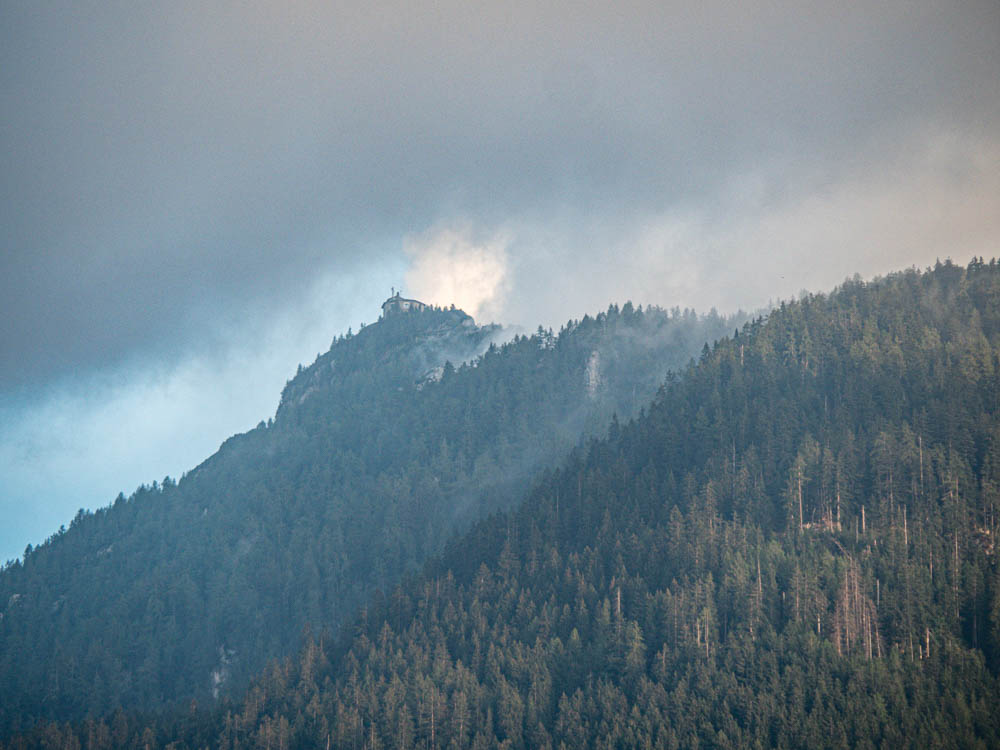
What actually was Hitler’s Eagle’s Nest?
Seeing as how you’re reading this post—and thank you for doing so, by the way—you’re probably already considering a visit to the Eagle’s Nest. Ergo, you’ve already heard the usual spiel about what it is, such as:
- It was Hitler’s alpine retreat. (whatever that means)
- It was a gift to Hitler for his 50th birthday.
- Hitler was afraid of heights so he didn’t spend much time here.
As with most things in life, there’s much more to it, but that’s pretty much the gist. Here are few more details for you:
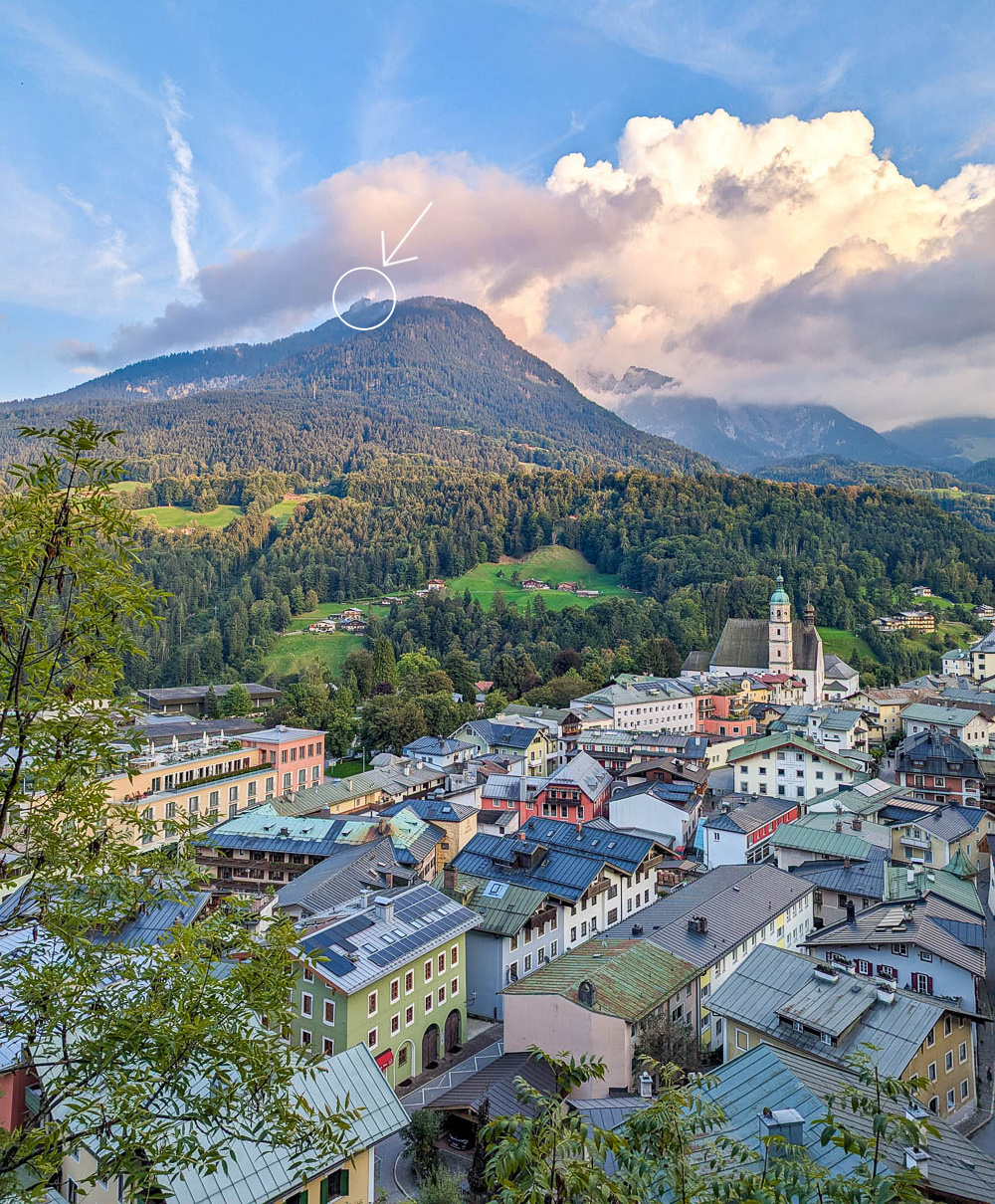
Berchtesgaden—Hitler’s “alpine retreat”
Berchtesgaden, Germany served as a headquarters for the Nazi Party during World War II. Hitler’s home and office were located here, along with the homes of other top Nazi officials like Hermann Göring, Joseph Goebbels, Albert Speer, Heinrich Himmler, and more (of history’s most notorious villains). When the Party wasn’t governing from Berlin, the Third Reich was governed from Berchtesgaden.
Though the term “retreat” is often thrown around when describing Hitler’s relationship to Berchtesgaden and the Eagle’s Nest, it was indeed much more than just an idyllic sanctuary. Rather, this town was a critically important hub for Nazi activity. Outside of Berlin, Berchtesgaden was the most important Nazi seat of government.
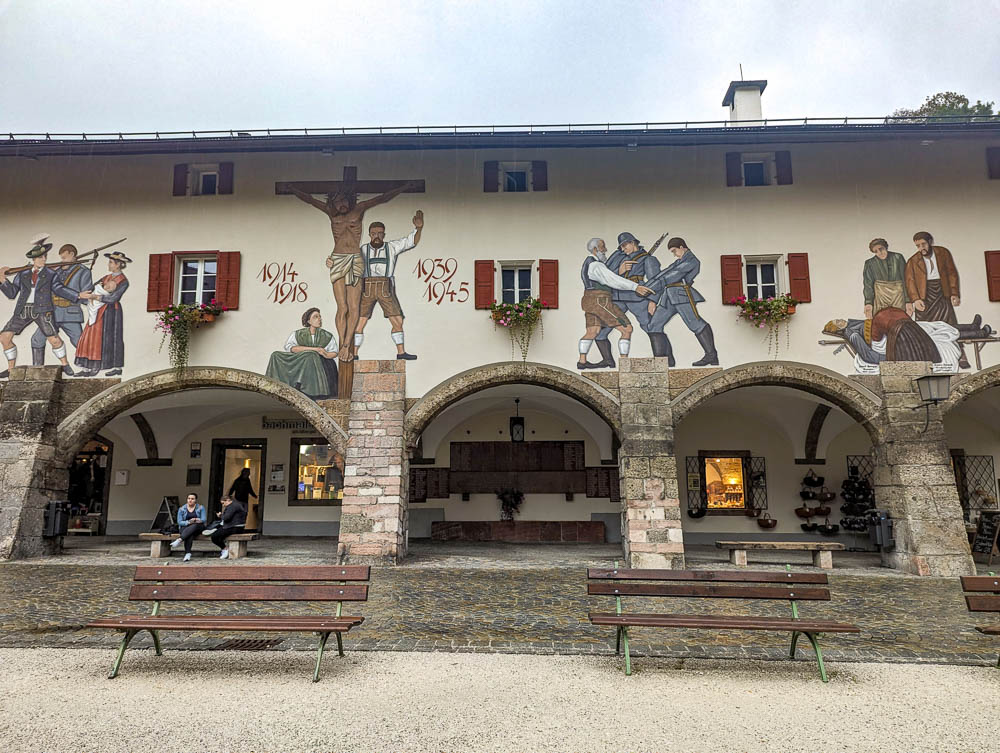
It was here (specifically from his Berghof) that Hitler planned much of his conquest of Europe and where some of history’s most important meetings took place. This is also where the Nazi Party stored some of its most valuable plunder—gold and jewelry; priceless works of art; luxury cars; some* of the world’s most expensive liquor, wine, and champagne; and, I would imagine, a vault filled with cash where the Führer could enjoy a morning swim.
Berchtesgaden was indeed the “crown jewel” of the Nazi empire, which means the Eagle’s Nest was more than just a house for parties, more than just a mere birthday present. And it’s more than “just a restaurant” today.
*It was a sh!tload, actually. The wine cellar at Hermann Göring’s house was estimated to contain a “half million bottles of the finest wine, champagne, and cognac imaginable.” [source] Want a visual? Check out episode 10 of the miniseries Band of Brothers.

Also read: My full guide to World War II sites in Munich, Germany
Birthday gift for Hitler
Common belief is that the Eagle’s Nest was a gift from the Nazi Party to Hitler for his 50th birthday. (Some sources agree; others say “Hmm not quite.”) It was Hitler’s personal secretary Martin Bormann who commissioned the building, hoping to earn the Führer’s favor.
Construction began in 1937 and, whether the Party truly presented it as a “birthday gift” or not, they did set Hitler’s 50th birthday as the project’s deadline. Adolf himself was busy in Berlin receiving other extravagant gifts on said birthday which, shocker, was celebrated throughout Germany as a national holiday.
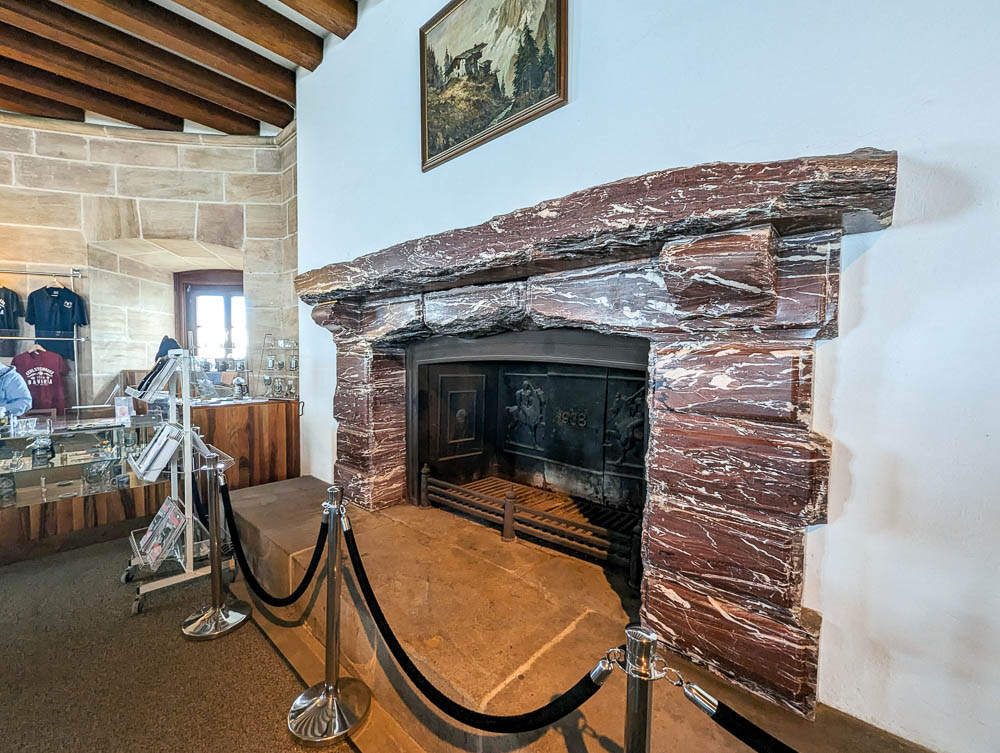
The Eagle’s Nest is just one of many WWII sites in Berchtesgaden. Get the full list in that link!
Hitler, the acrophobe
Hitler was known to be dreadfully afraid of heights, so he didn’t really like spending time at the Eagle’s Nest. In fact, it’s rumored he only visited a handful of times. (Imagine spending the equivalent of $247 million on a birthday present for your boss and HE HATES IT.)
But he did use it, mostly to entertain visiting foreign leaders and other VIPs with varying levels of fascist predilections. Swanky mountaintop fortress = power, dominance, intimidation. Nevertheless, other Nazi officials used it plenty and Eva Braun was allegedly fond of sunbathing on the terrace.
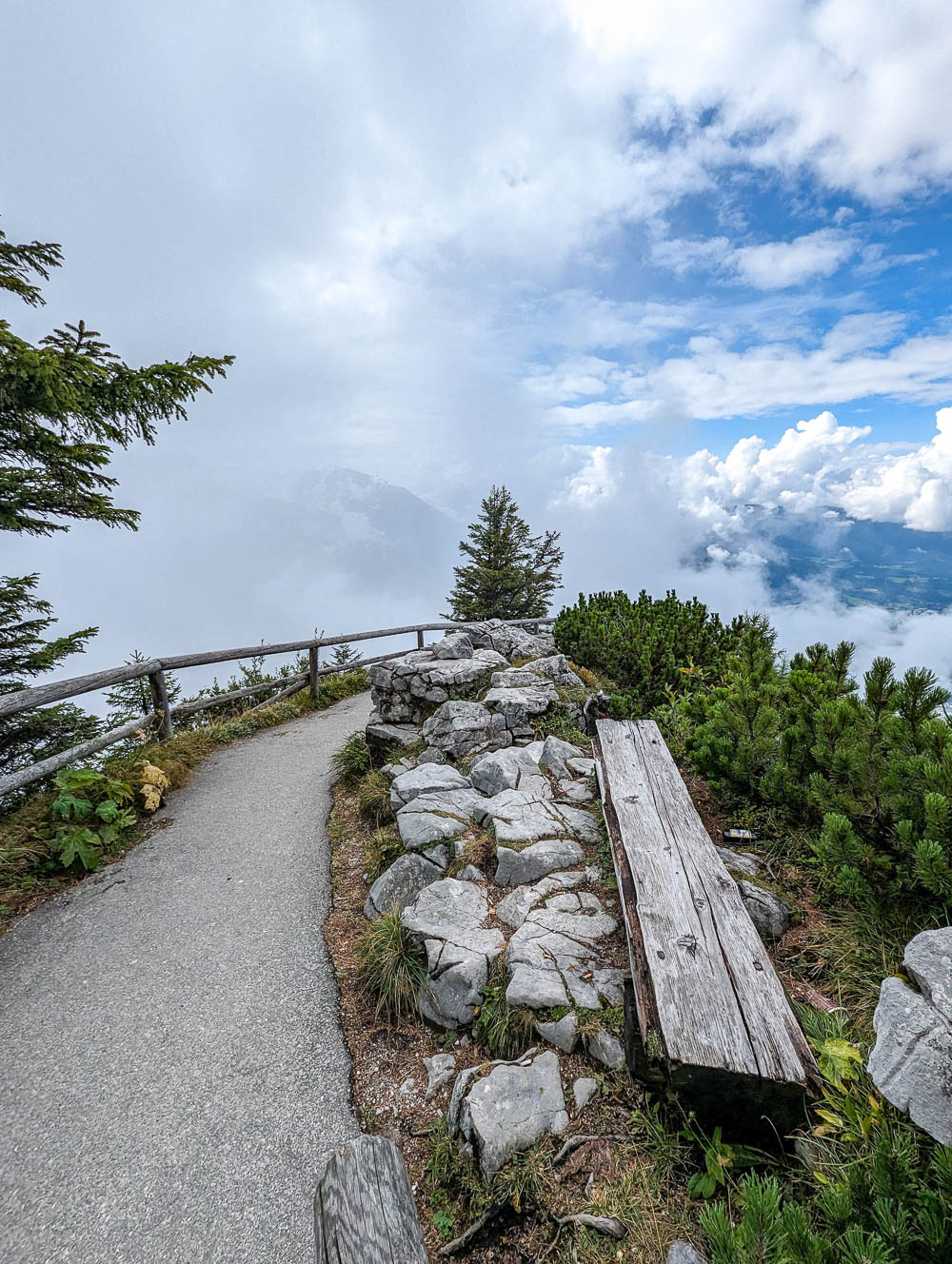
While in Bavaria, also consider visiting Dachau Concentration Camp–the first ever Nazi concentration camp and the model for all the ones that followed.
What is the Eagle’s Nest now?
Today, the Eagle’s Nest is the #1 tourist attraction in Berchtesgaden, Germany… a town that desperately wants you to forget all the horrible stuff that took place here. But, whatareyougonnado? The views are magical.
Once a lair for super villains, the Eagle’s Nest now functions mainly as a restaurant. There are a few indoor restaurant spaces as well as an outdoor dining terrace. There are several other rooms you can explore that are empty except for some small panels containing historical information.
On the large sun terrace, there’s also a 14-panel historical exhibition courtesy of the Institute for Contemporary History. This exhibit explains the history of the Eagle’s Nest, of Berchtesgaden, of events that followed the war, and how this building has since become a tourism darling.
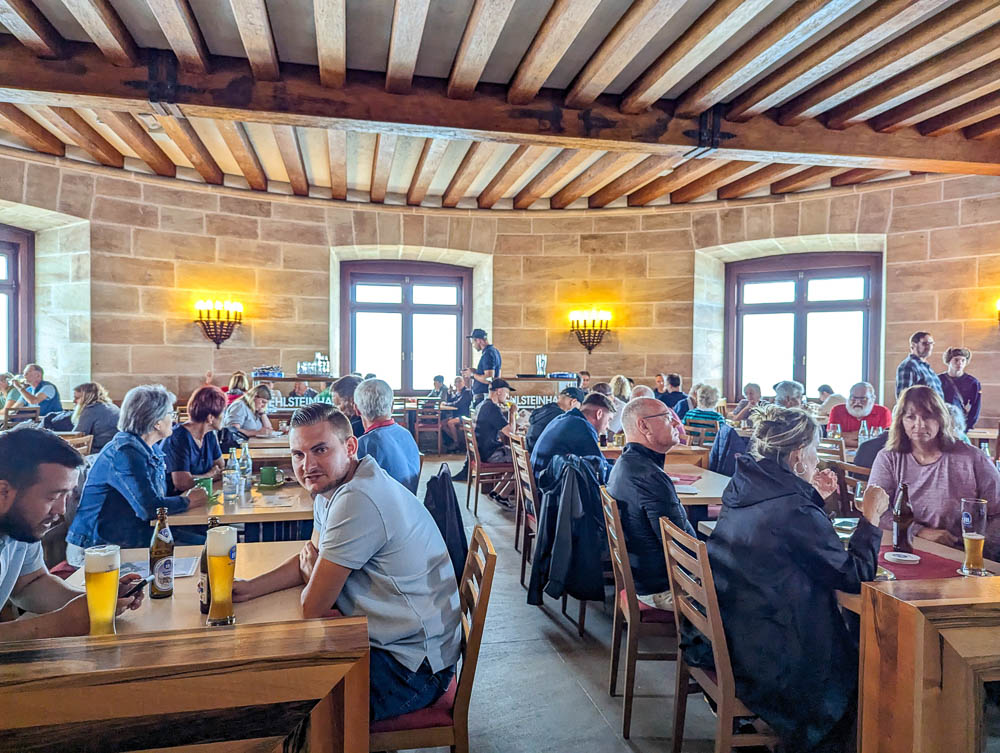
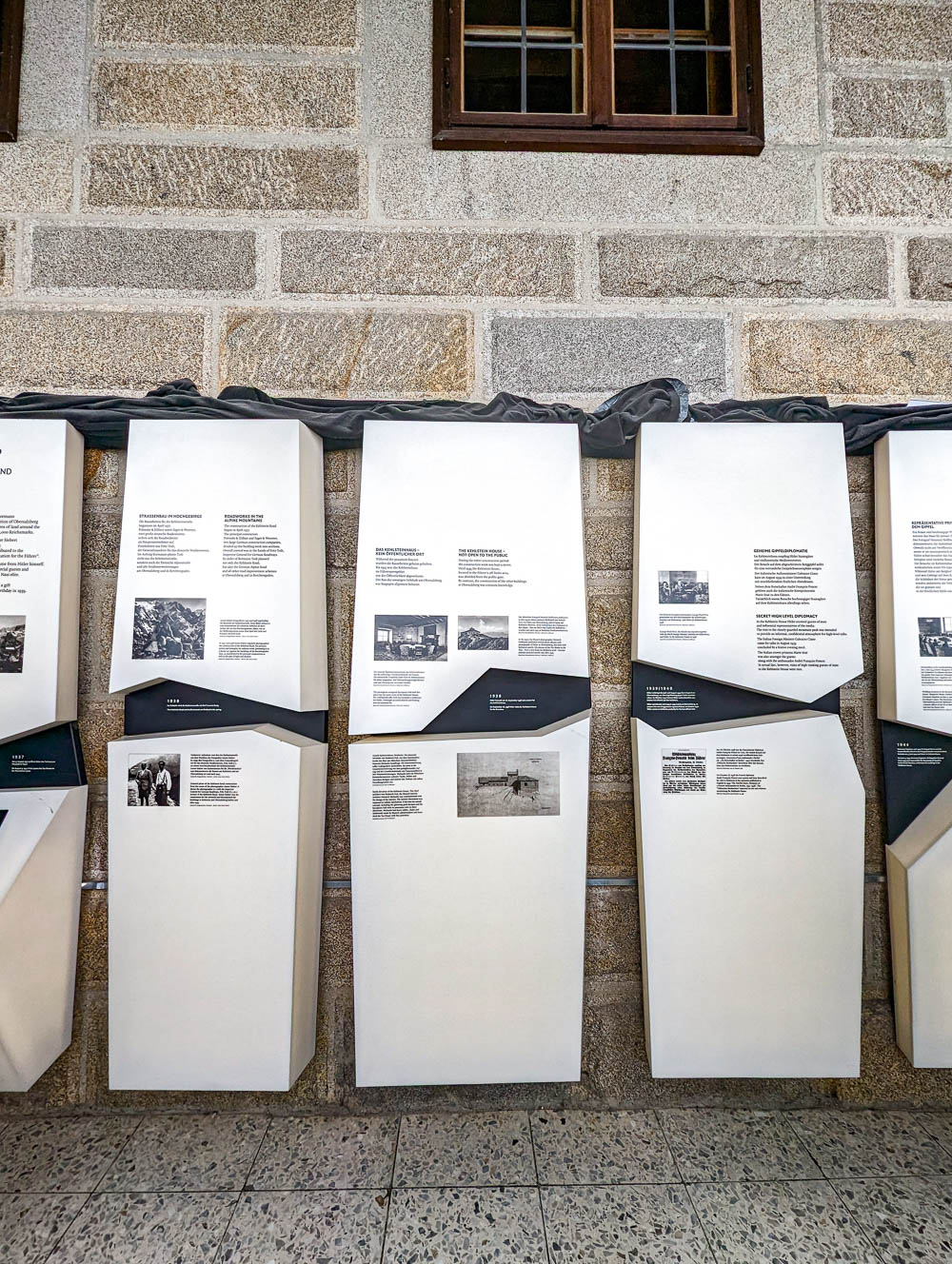
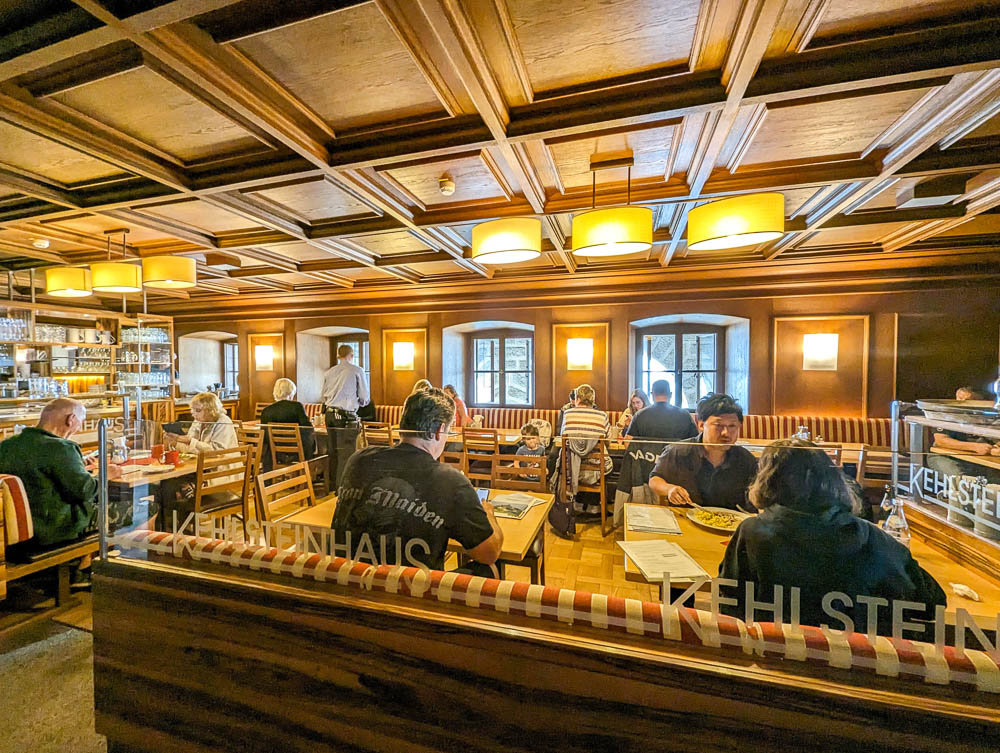
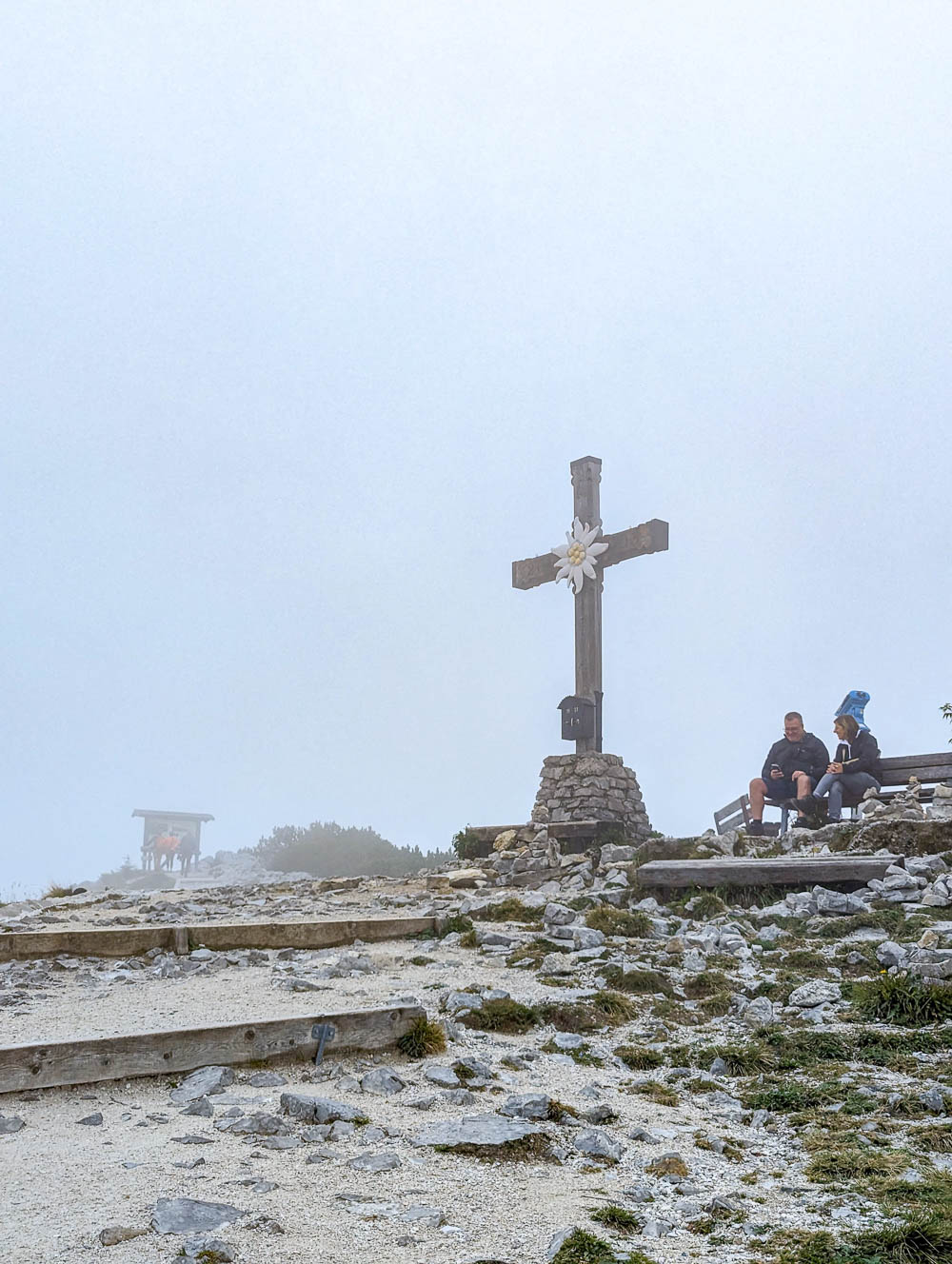
For more on what else you can do here, check out my guide to visiting Berchtesgaden on my other site.
Eagle’s Nest terms you need to know
While planning your visit to Hitler’s Eagle’s Nest you’ll see a handful of terms that are seemingly used interchangeably. Allow me to clear a few things up…
Berchtesgaden – City in Germany where you’ll find the Eagle’s Nest. Located about 1 hour 45 minutes from Munich and 30 minutes from Salzburg, Austria.
Berghof – Hitler’s grand home and office located further down the mountain toward Berchtesgaden. Only ruins remain today. (And you can see them if you opt for hiking to the Eagle’s Nest instead of taking the bus.)
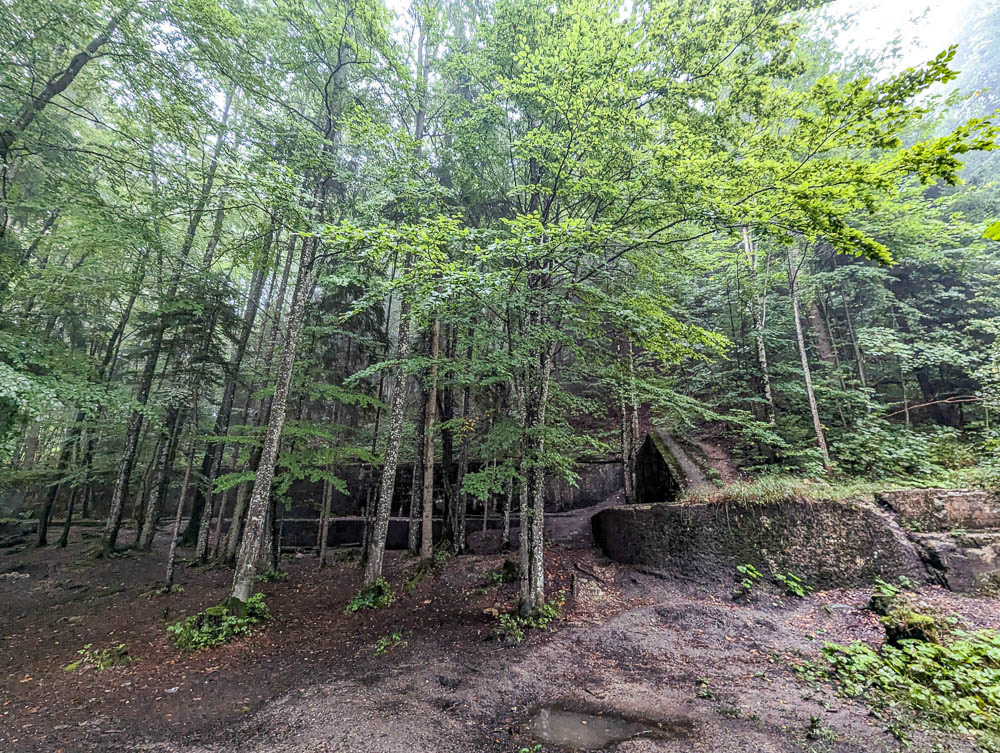
Kehlsteinhaus – The actual, German name of what we English-speakers call the Eagle’s Nest. In Germany, you’ll only see this building referred to as Kehlsteinhaus. (Derived from the fact that it sits atop the Kehlstein mountain.)
Obersalzberg – Small area of town (still part of Berchtesgaden) that’s a bit up the mountain where Hitler and other Nazi leaders used to live and work.
Obersalzberg Documentation Center (Dokumentationszentrum Obersalzberg) – Museum in the Obersalzberg that focuses on the area and its role in National Socialist history. More info here.
The Teahouse – Every now and then someone refers to the Eagle’s Nest as Hitler’s Teahouse, but his Teahouse was a different structure altogether. The Teahouse on Mooslahnerkopf (officially) was further down the mountain, a bit closer to Hitler’s house, but was yet another frivolous “retreat.” Unlike the Eagle’s Nest, he visited this building pretty much daily. Nothing remains of the Teahouse today.
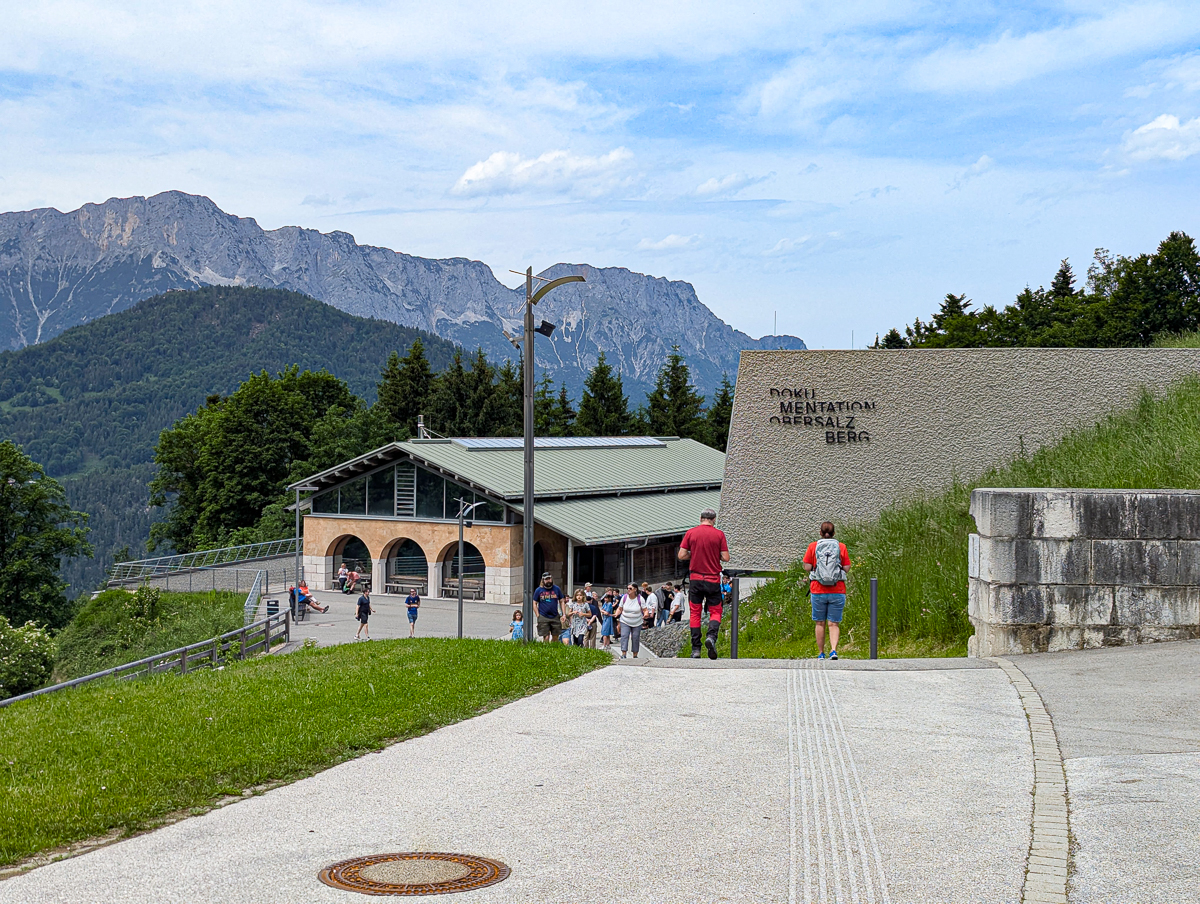
While in Munich, also check out the NS Documentation Center. Located at the former (original) Nazi headquarters is this museum that details the Nazi Party’s origins and rise to power.
Why visit Hitler’s Eagle’s Nest?
Honestly, I don’t know what motivates most people to visit Hitler’s Eagle’s Nest; I can only speak for myself. For many, it probably has to do with the fact that it’s a well-known tourist attraction, one of the “best things to do” here. There’s nothing like the dopamine rush of checking something off a list, after all.
The Eagle’s Nest is world famous for its mountaintop location, where you can find fabulous alpine views and an, albeit, dark connection to history. It’s also relatively easy to get to and makes a great day trip from more popular cities like Munich and Salzburg.
For me, I was mostly motivated by the history of the Obersalzberg as a whole and the role it played in the events of World War II. And really, I wanted to see what the Eagle’s Nest was all about, given its popularity. It’s not every day a World War II site gets to be so popular with the mainstream travel crowd.
As someone who does a lot of hiking in the Alps, the incredible views had little to do with my decision to visit Hitler’s Eagle’s Nest. And it’s a good thing too because I saw nothing but clouds the entire day. (My visit in 2025 had much better weather!)
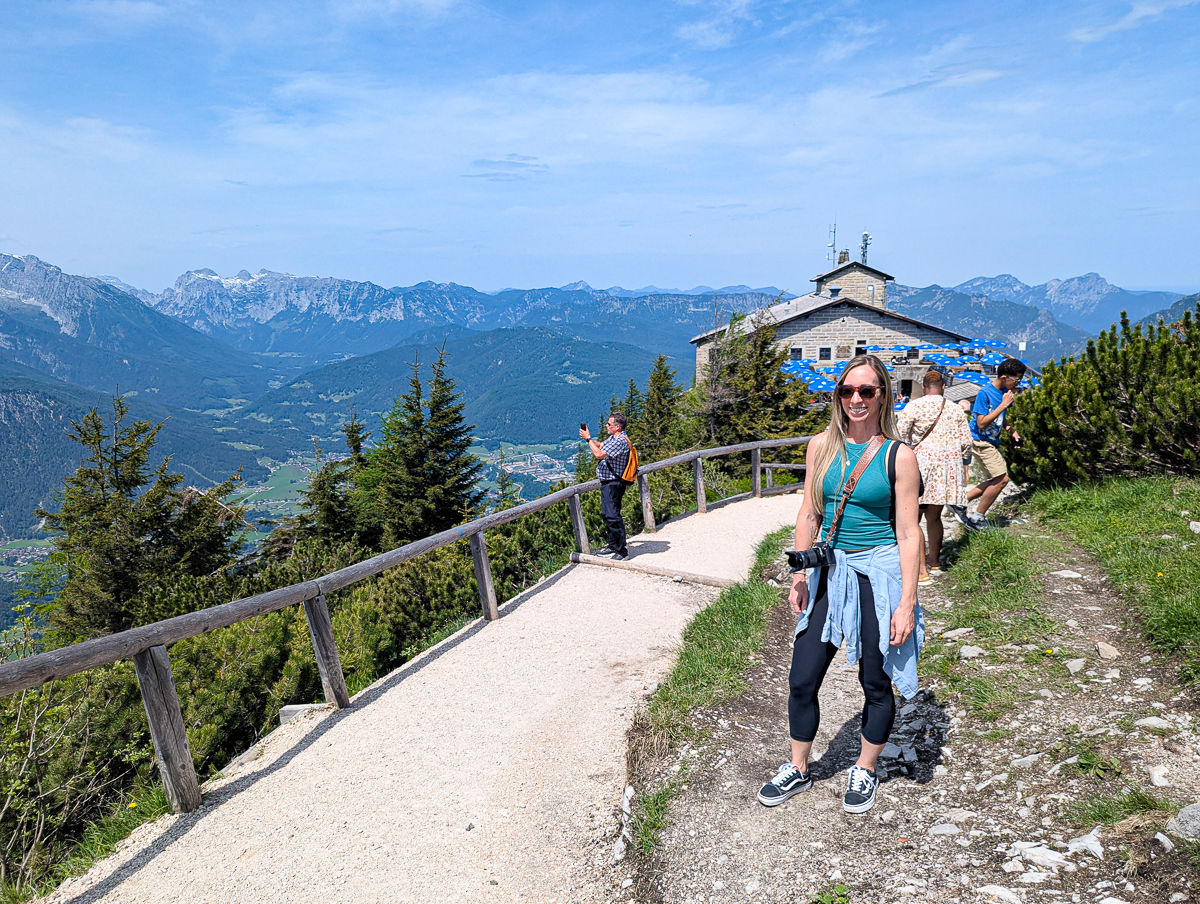
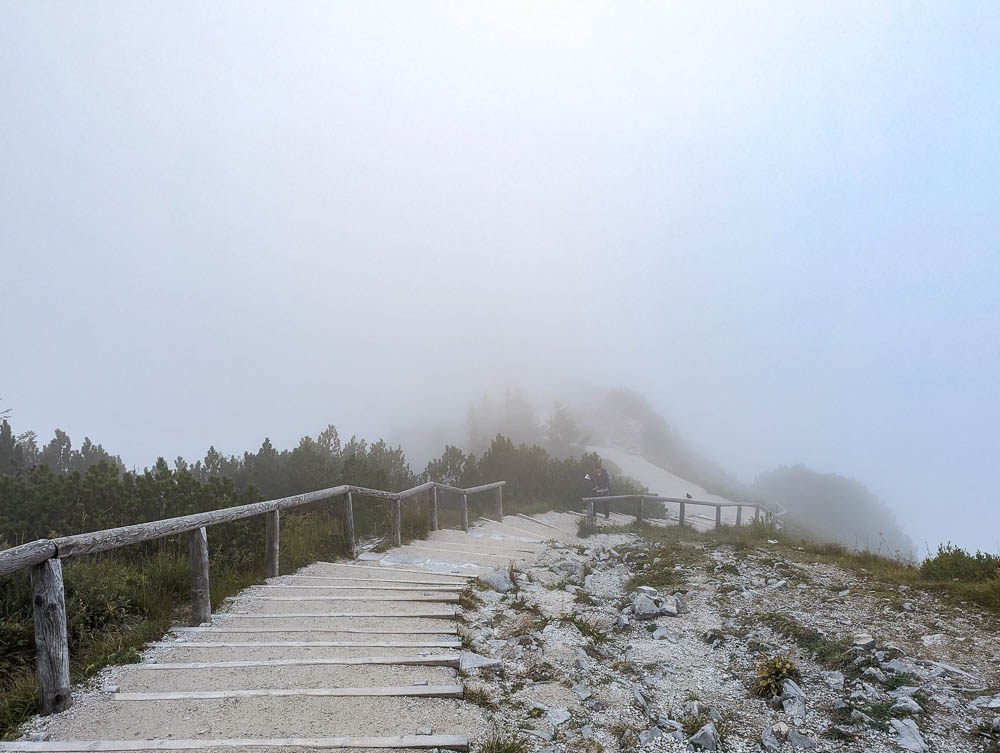
Is Hitler’s Eagle’s Nest worth visiting?
If you’re trying to decide whether or not a visit to Hitler’s Eagle’s Nest would be worth it, ask yourself why you want to go.
Visiting the Eagle’s Nest is worth it if:
- You can appreciate the history of it, even if you can’t blatantly see it
- You want to have a decent lunch on top of a mountain with incredible views
- You’re able to keep an open mind and not jump to conclusions about it
- It’s been on your bucket list for a while – always a worthwhile reason even if you end up not liking it in the end

Visiting the Eagle’s Nest is not worth it if:
- You think the whole thing is actually a museum
- You’re expecting it to look exactly like it did during the war
- You expect restaurant service to be like you’re used to here in the U.S.
- You hate crowds, tourists, coordinating logistics, and spending money
For me, visiting Hitler’s Eagle’s Nest was absolutely worth it! And I didn’t even get to see the views my first time! And I actually spent 3 hours hiking up the mountain to get there! As a WWII enthusiast, I found so much history here to appreciate. In fact, it felt like a superpower among the tourists who regularly complain about it being “just a restaurant” now. It’s all about perspective, people!
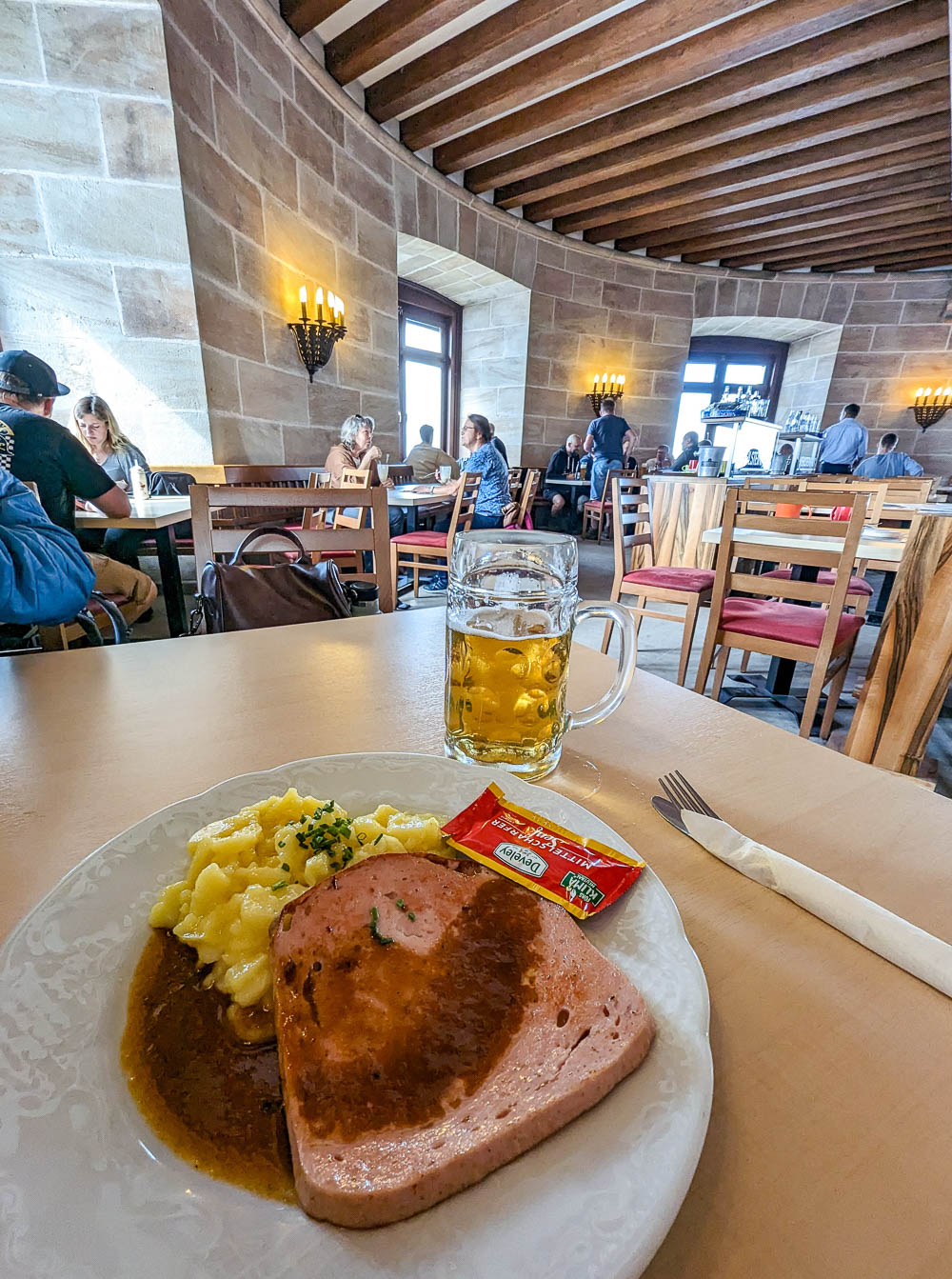
Managing expectations: the key to enjoying the Eagle’s Nest
The three most common things people know about the Eagle’s Nest—alpine retreat, birthday present, didn’t visit that often—are also where most people begin and end their research into this historical building-turned-tourist attraction.
Using those three “facts” alone, they fashion an idea of what visiting the Eagle’s Nest must be like. We all know what happens when we assume, and the visitors who write the scathing, utterly clueless 1-star reviews of this place certainly do look like asses.
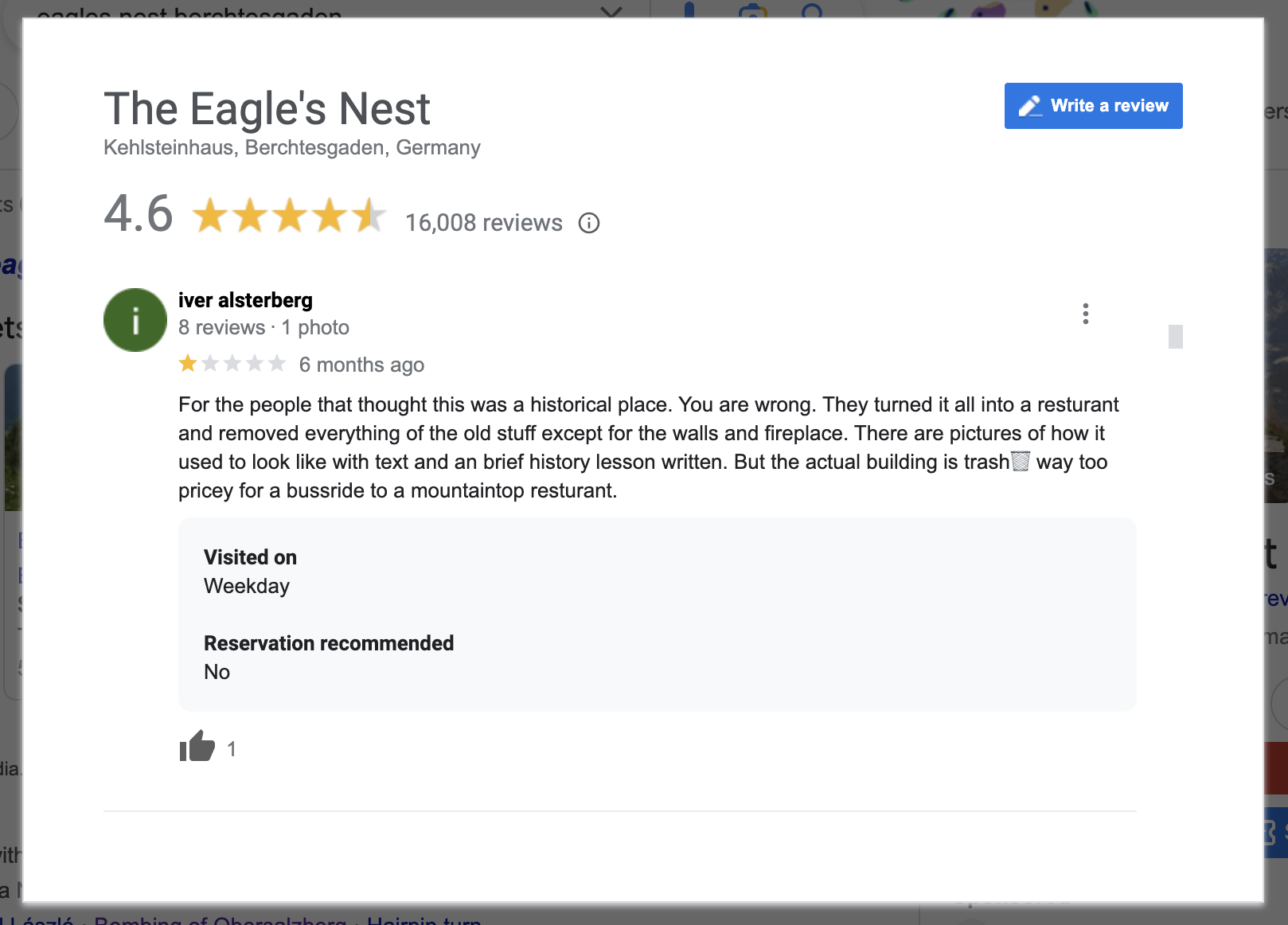
These visitors assume the Eagle’s Nest is going to look exactly like it did during the war years and/or that it’s now a museum (or shrine?) to Hitler and his risky Nazi business. For whatever reason, they also assume there’s going to be loads of things to do up here.
When they arrive and find out it’s “just a restaurant now,” they act shocked and betrayed, as if they’d been swindled and lured into, as one reviewer put it, a “literal tourist trap.” (I can assure you, no tourists are held here against their wills.) Why are y’all so mad about this? It never claimed to be anything other than a restaurant.

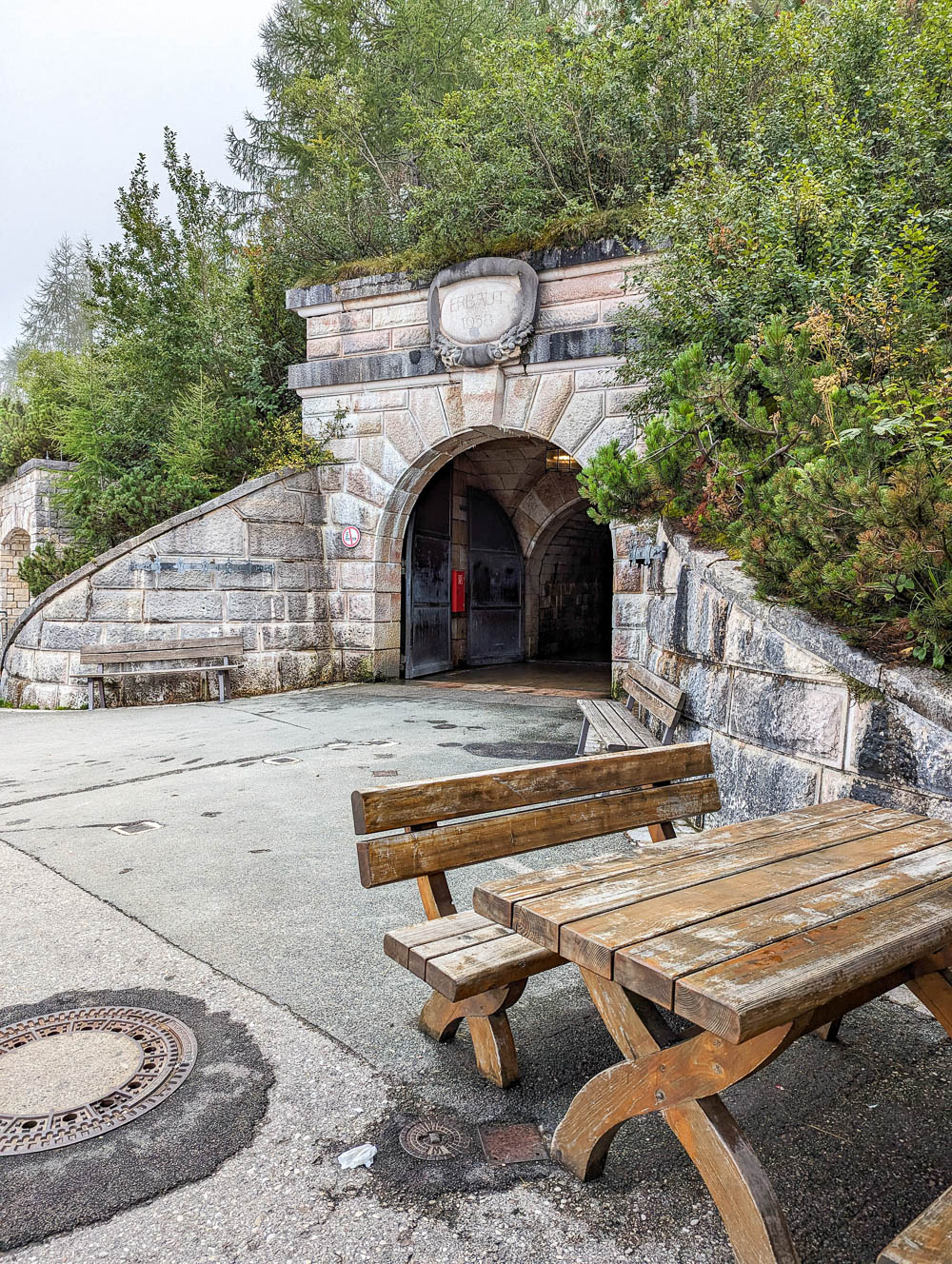
About those negative reviews
So many of the negative reviews of Hitler’s Eagle’s Nest feature the same complaints:
- “It’s only a restaurant on the top of a mountain.”
- “The Eagle’s Nest has been turned into nothing more than an overpriced restaurant.”
- “Just an average restaurant, completely lacking in anything historical.”
- “There is nothing historical left here.”
- “Hitler’s office was not open to viewing at all.”
- “Not even remotely interesting from a historical perspective. Information content is almost zero.”
- “Even Hitler hated it here.” (Sure, use him as your pillar of rationality.)
These were undoubtedly written by the kinds of tourists who can’t be bothered to lift a finger when it comes to doing any kind of research. The kinds clearly accustomed to being herded from place to place. The kinds who want a tour guide to recite the few shallow facts they want to hear that validate the few shallow things they already want to believe. Heaven forbid a historical site should challenge their preconceived notions.
Yes, there is a restaurant at the Eagle’s Nest, this is a fact. (And to be fair, the prices are pretty standard.) But to say this place is “only” a restaurant, or that it completely lacks “anything historical,” or that’s it “not even remotely interesting” (how dare you!) is wildly inaccurate.
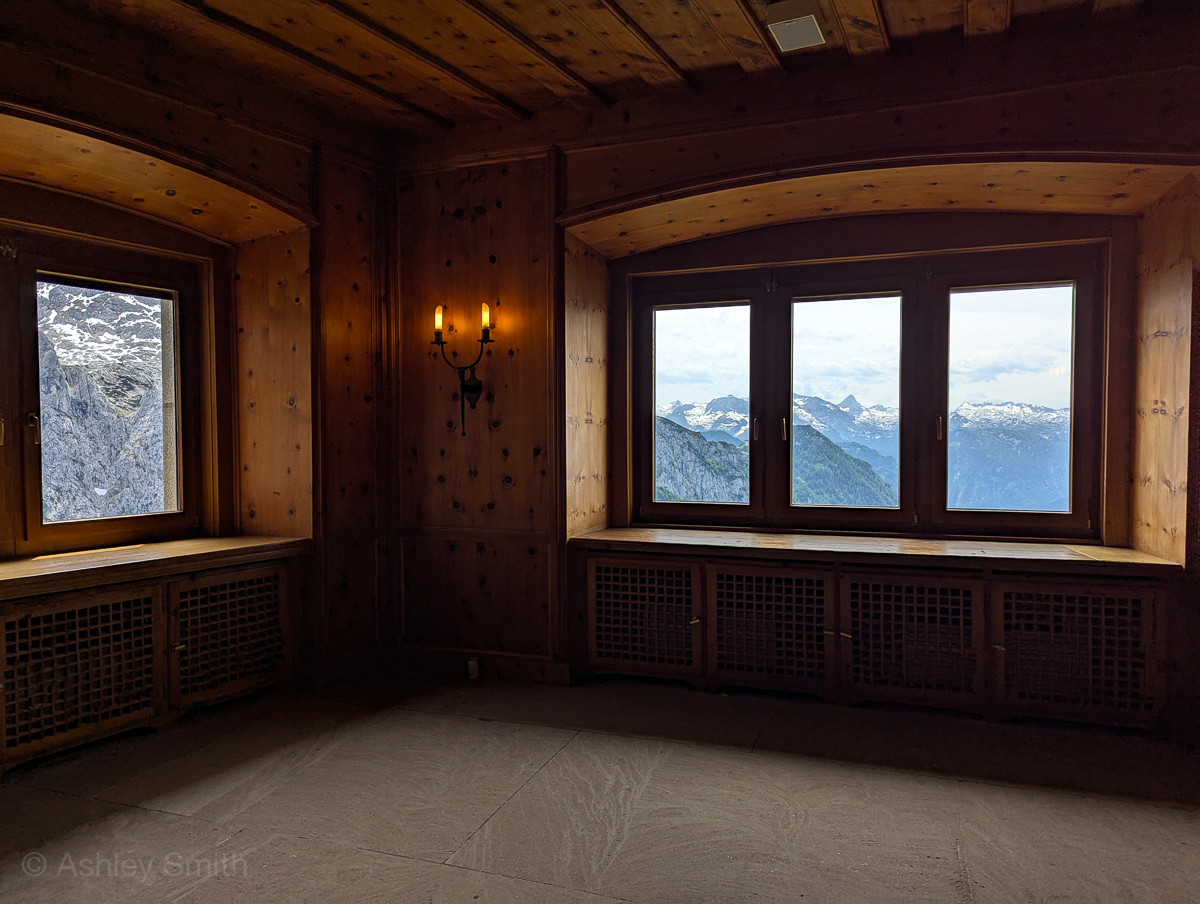
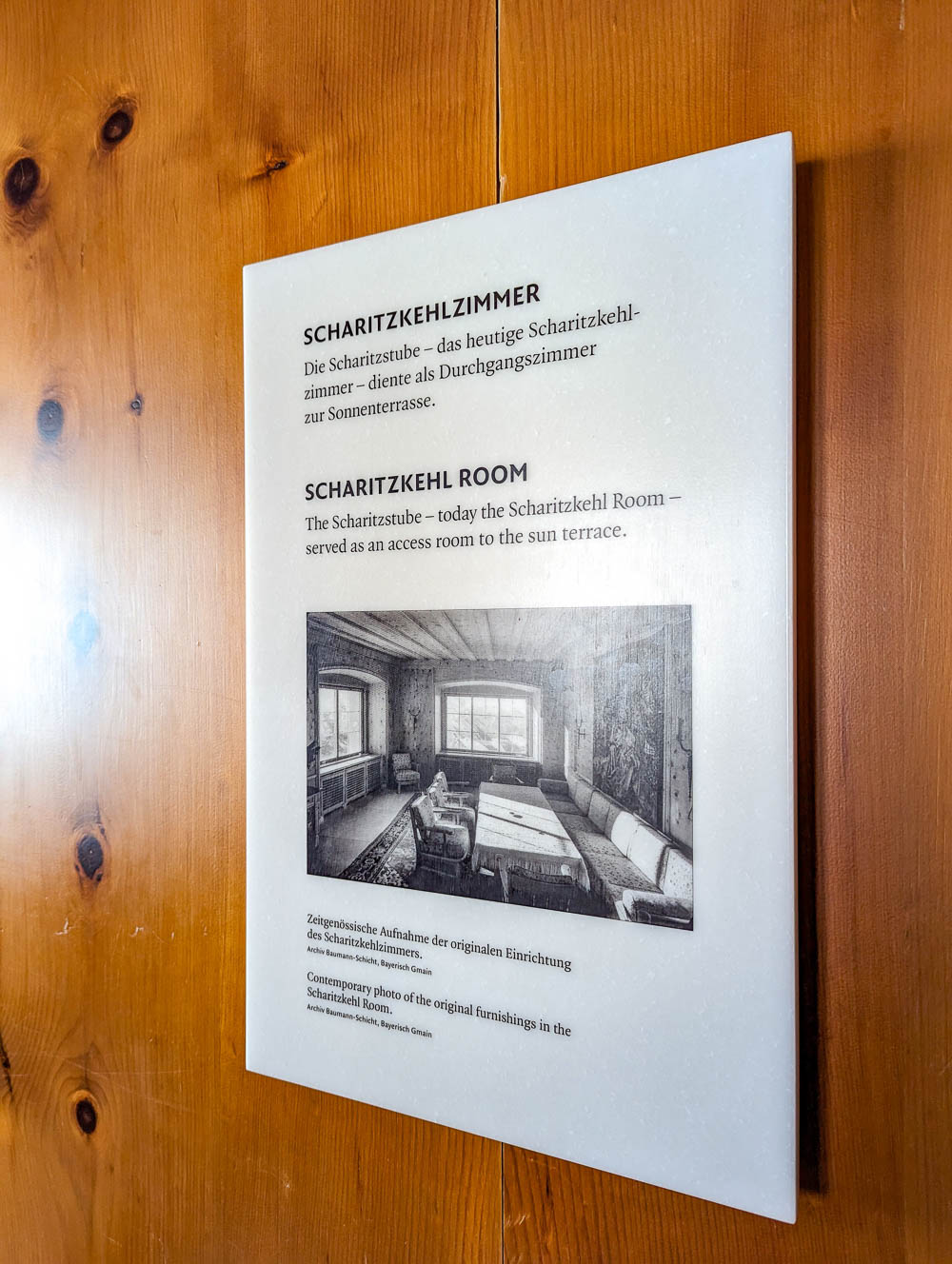
The truth about visiting Hitler’s Eagle’s Nest
There’s plenty of history here if you OPEN YOUR EYES, especially if you can do so with a historical mindset. First of all, the building itself is steeped in history. Watch film footage or sift through historical photos of the Eagle’s Nest and you’ll see the place has hardly changed between 1945 and the time you got here and started complaining about having to pay extra for bread with your meal. (Welcome to Germany; clearly you’re new here.)
Walk through as much of the building as you can. You’ll find room after room with informative panels and photos of how it looked back in Hitler’s day for you to compare with today, plus its history. Seriously, every room has this.
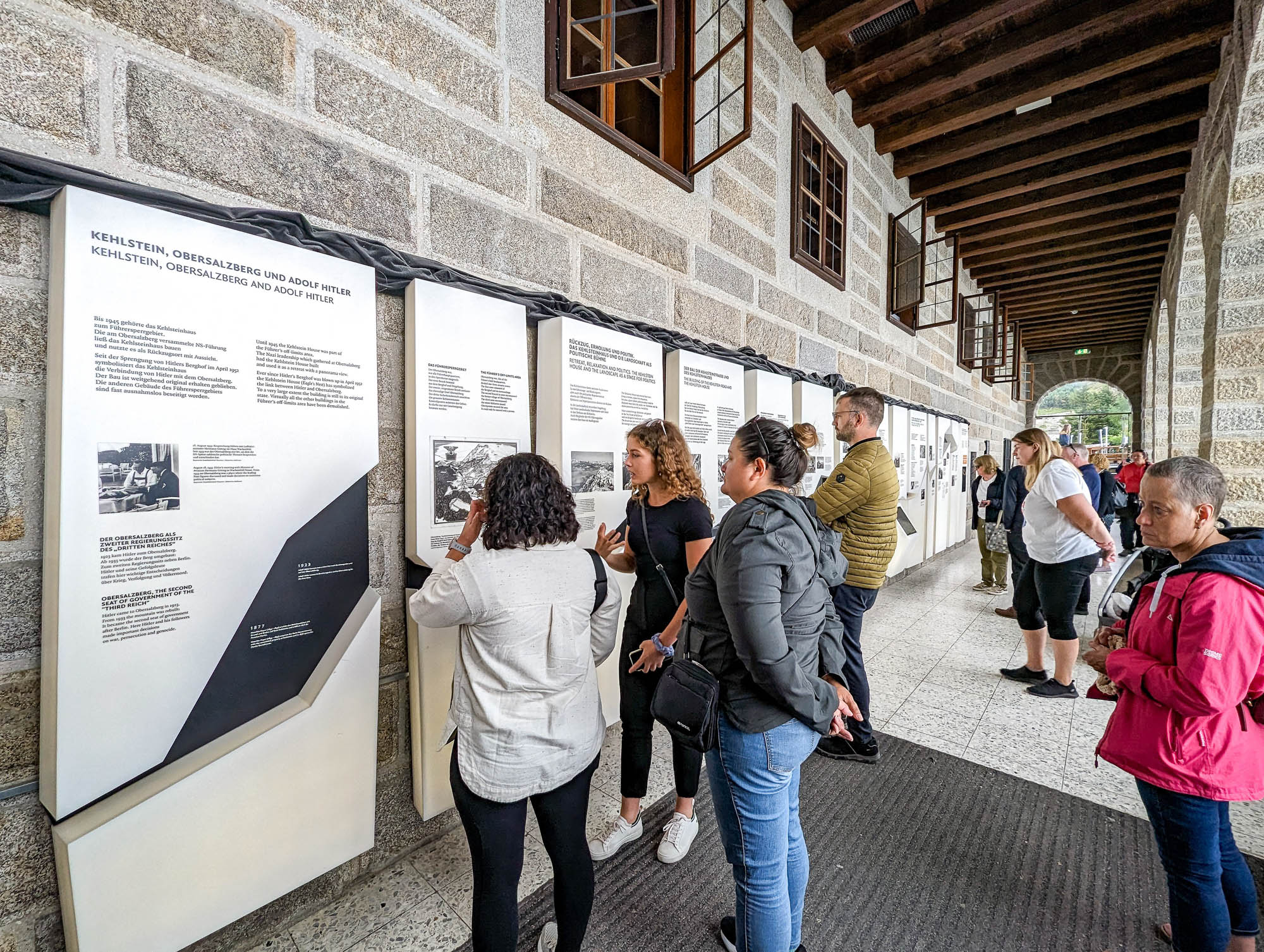
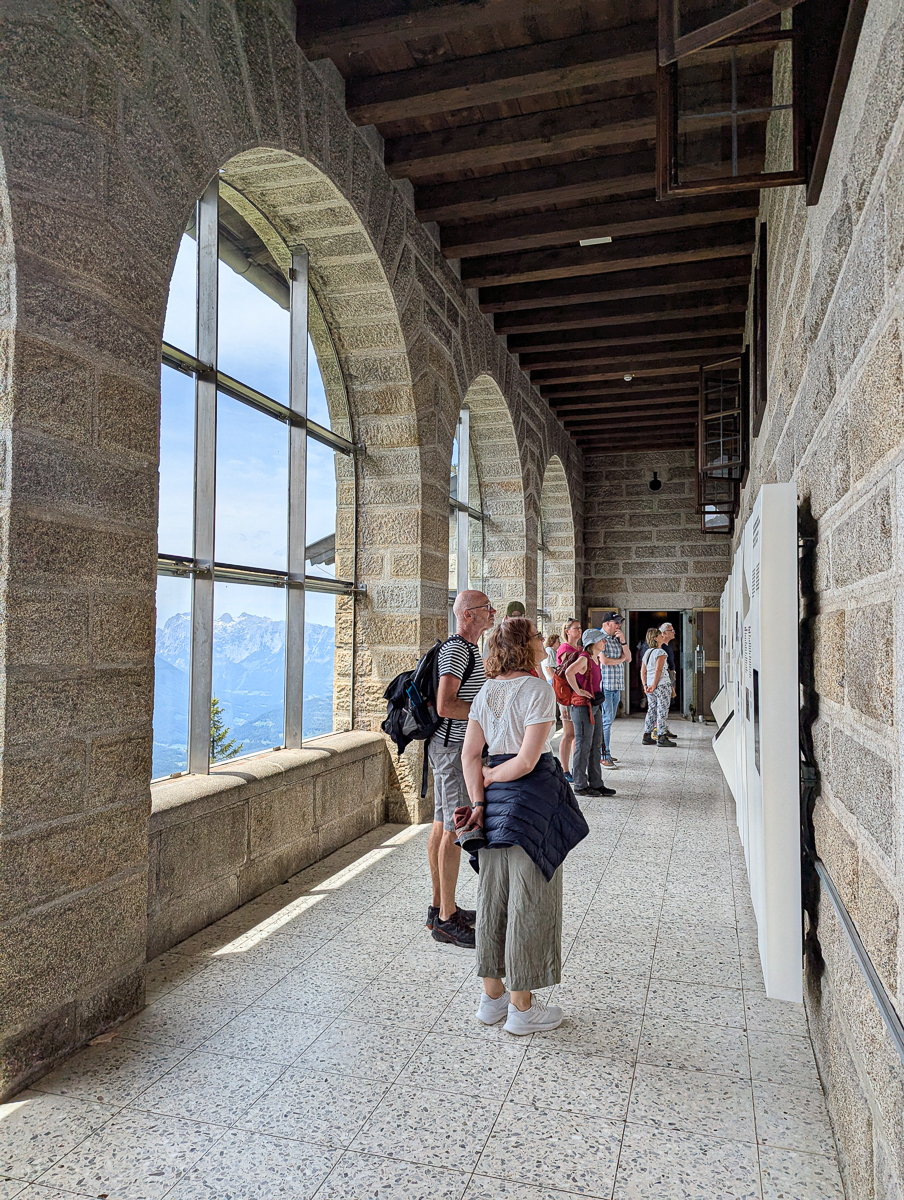
Visit the sun terrace and check out the full multi-panel museum-style exhibit detailing the history of Berchtesgaden and the Eagle’s Nest. Ride the famous brass elevator that was once reserved exclusively for Hitler and his VIPs (and read more about it here).
Check out the big doors at the entrance to the tunnel that leads into the mountain and you’ll see where American servicemen carved their names into it after liberating the town from Nazi control. In the restaurant, look closely at the fireplace and you’ll see where the marble has been chipped away–souvenirs taken by looters after the war.
Make an effort to learn about the world-changing events that took place here and you might appreciate your visit a little more. Like how British Prime Minister Neville Chamberlain took the first flight of his life to meet Hitler at his nearby Berghof in an attempt to calm him down and prevent total war. Or how Hitler had been partying at the Kehlsteinhaus for Eva Braun’s sister’s wedding and, umm, slept through the D-Day invasion.
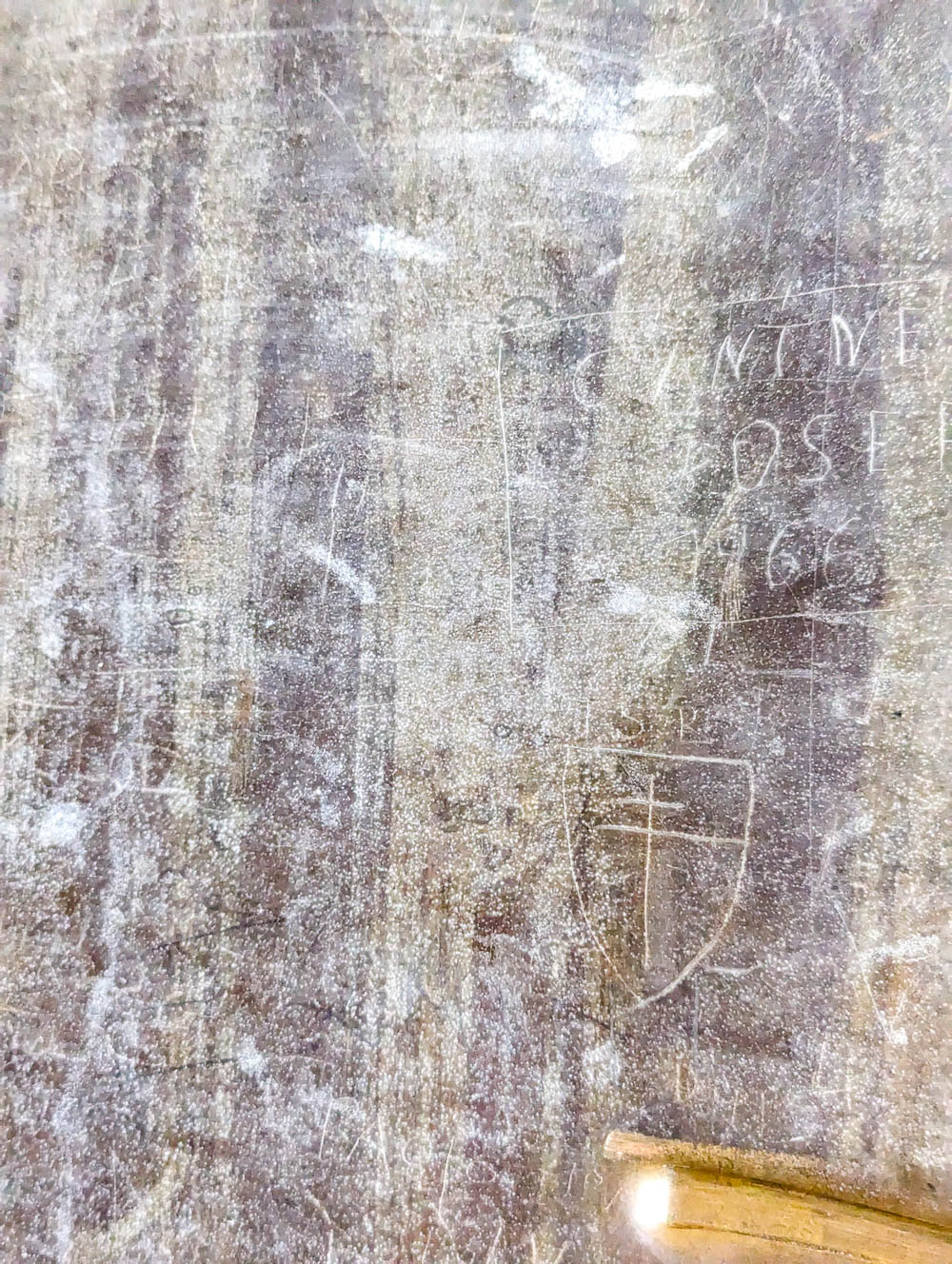
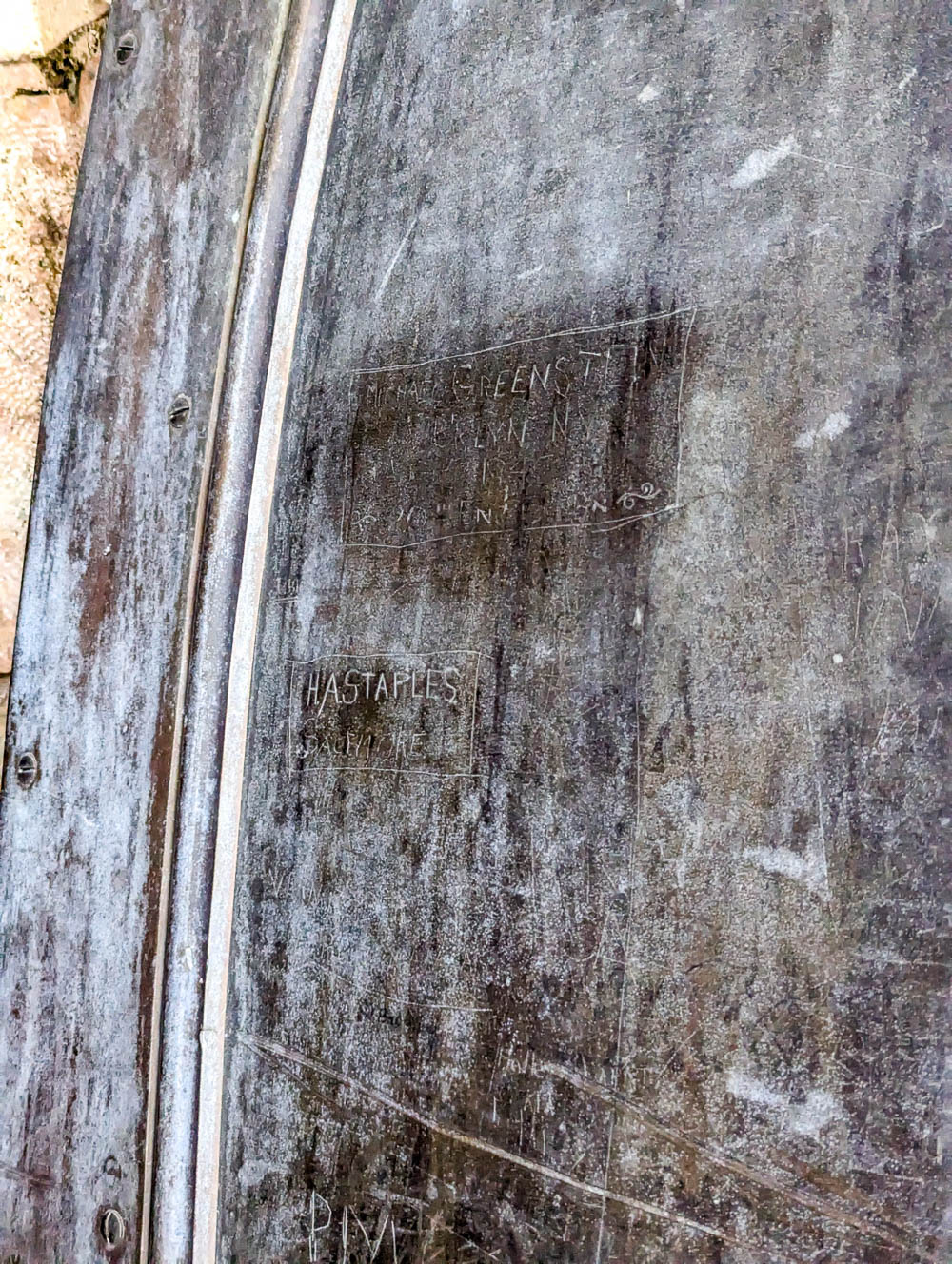
It’s all about perspective
If you get all the way to Berchtesgaden and all the way up to the Eagle’s Nest and still see nothing but a restaurant and a tourist trap, that is 100% on you. It’s not that the Eagle’s Nest didn’t live up to your expectations; it’s that you were simply unwilling to put in the effort necessary to appreciate its history.
Being able to see and appreciate history is a superpower, one that brings its possessor endless wonder and amusement. It’s not that the Eagle’s Nest didn’t provide; it’s that you shut your eyes to the evidence.
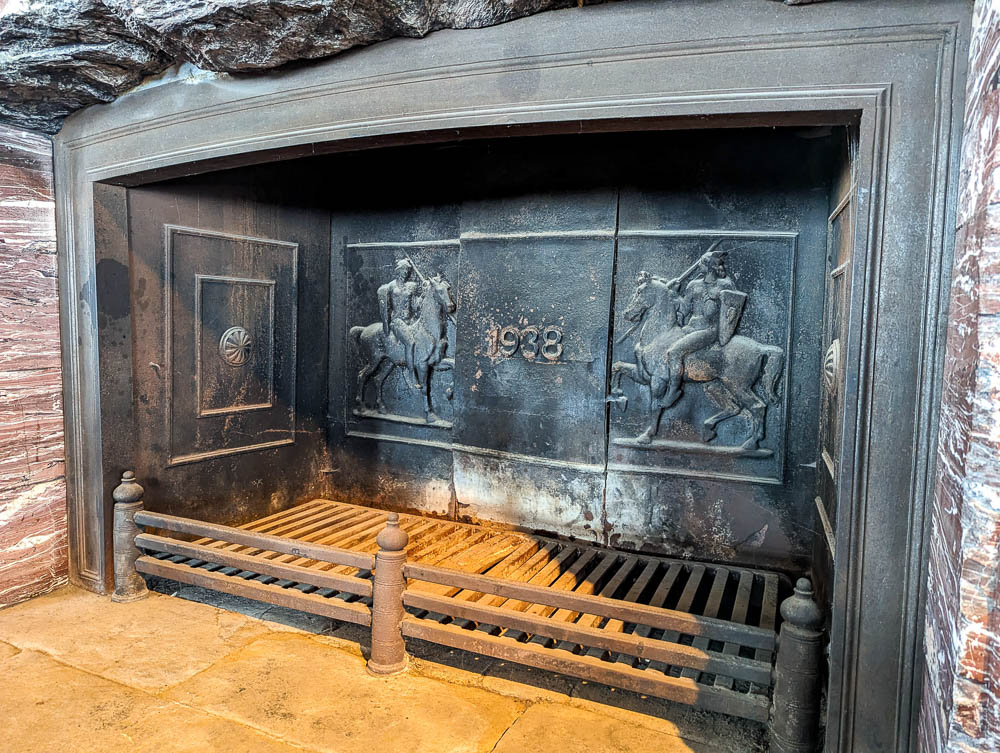
Why being a “tourist trap” is a good thing
I want to address those who call the Eagle’s Nest a “tourist trap,” and why I think this is actually what makes it so great.
I’ll admit, Hitler’s Eagle’s Nest does possess some of the negative traits associated with “tourist traps” like pricey transportation, crowded buses, and maybe not the most polite restaurant service. But really, is this not our normal everyday lives at this point? No matter where we are? Exactly. (Update: I had incredibly friendly service here during my June 2025 visit!)
But… I think a lot about how much Hitler would’ve despised all these people traipsing in and out of his private hideaway (including, but not limited to, black, brown, Jewish, and even—gasp!—people with disabilities). How he’d loathe the fact that they sell t-shirts here now and will let just anyone ride in his elevator. And it just… it makes me so happy.
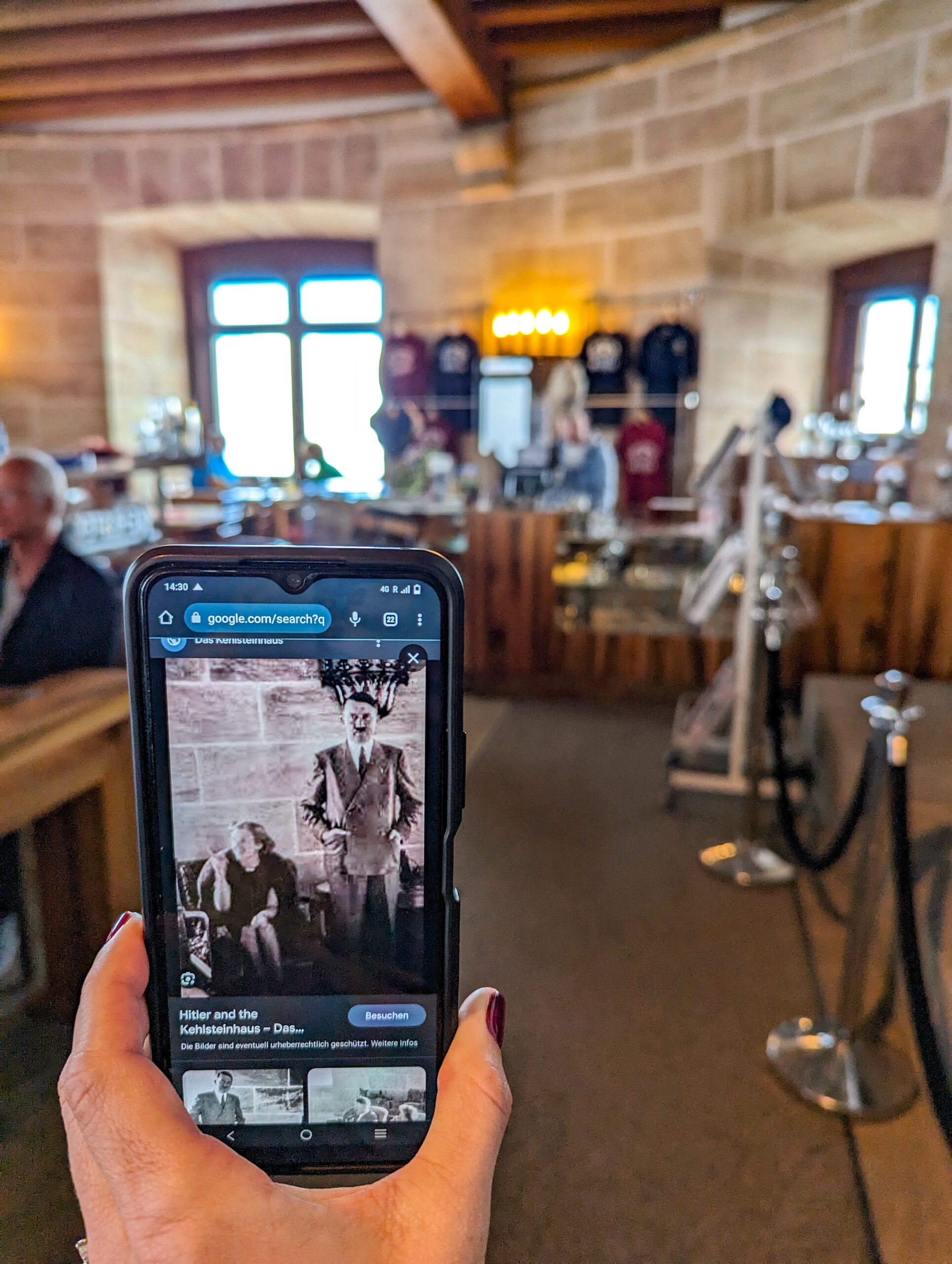
When I read negative reviews of places like Hitler’s Eagle’s Nest, I can’t help but think: How soon we forget how lucky we are. These visitors complain that the Eagle’s Nest is “only a restaurant,” but they’ve forgotten how incredible that is in itself.
Never forget that things could have gone very differently. The Eagle’s Nest could’ve proceeded as a headquarters of hate and we’d be dreaming of a day when we could do something as frivolous as let loose with some leberkäse here. There was a time when we never could’ve imagined casually drinking a beer inside Hitler’s private party house. The fact that we can do these things signifies a hard-won peace.
Whether or not the Eagle’s Nest lives up to your expectations, you have to remember you’re standing in an exceptionally historic place—this alone is a gift. Never forget how lucky we are and how much we owe to the ones who earned us such frivolous excursions through unimaginable sacrifice.
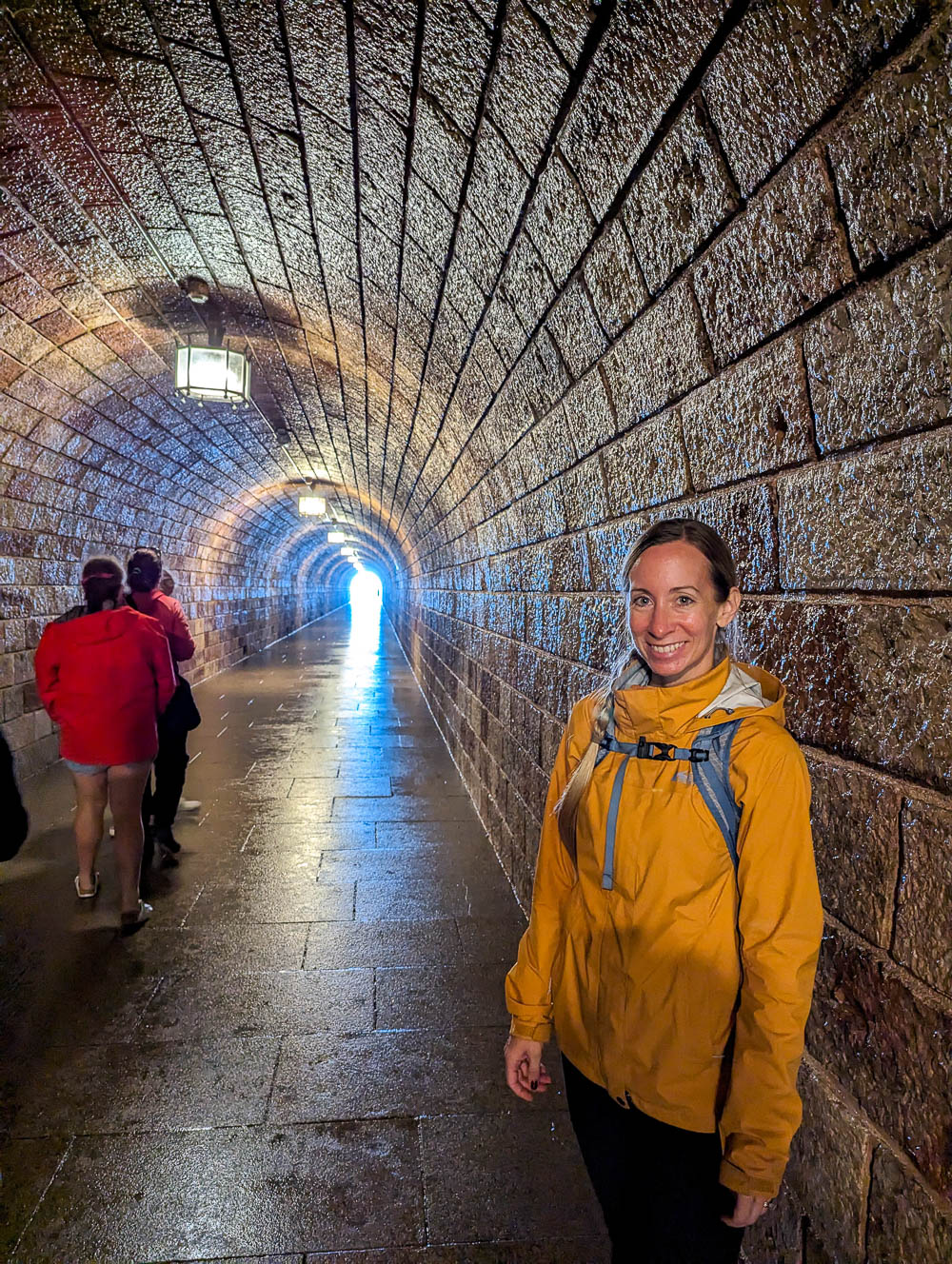
How it all began
After all, it was these same considerations that ignited our fascination with the Eagle’s Nest in the first place. As the war was winding down (so to speak), there were really only two objectives left: Berlin and Berchtesgaden.
While Berlin was the obvious strategic end goal, Berchtesgaden (and more specifically, the Eagle’s Nest) was more like a prize to be won. And, as one writer puts it: “The unit that did so would win for itself historical immortality as the conquerors of the crown jewel of Hitler’s evil empire.” There were no battles left to fight and few strategic objectives here; at this point, it was all about what Berchtesgaden represented.
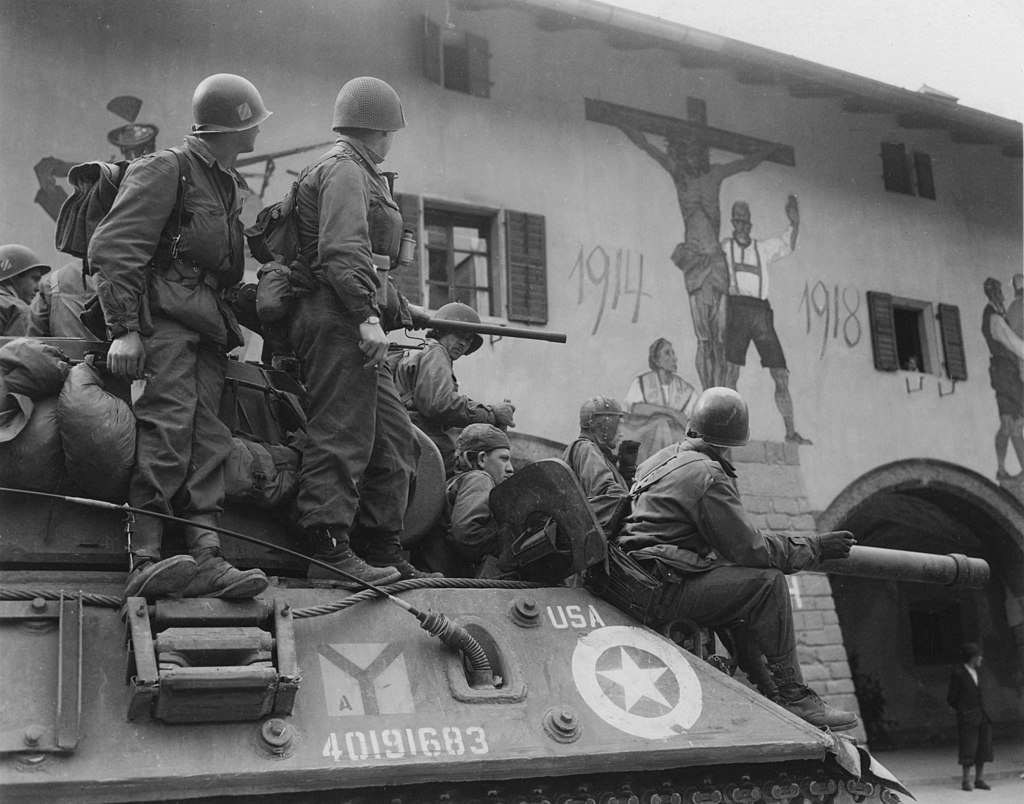
When the men of the U.S. 3rd Infantry Division arrived, they drank plundered wine in Hitler’s living room. The men of Easy Company popped bottles in the Eagle’s Nest’s dining room and kicked back on the sun terrace. Not because they needed to, but because they could.
According to one of the panels in the sun terrace exhibit: “From September 1945 to 1951 the Eagle’s Nest was under the control of the US occupation forces. Access was granted only to Americans, who by paying 50 cents were taken up to the Eagle’s Nest in busses.” Not for great food, not for endless entertainment, but because of what it represented.
So I urge you, visit Hitler’s Eagle’s Nest not because there are tons of things to see and do up here, or because the restaurant is the best, but simply because you can. And appreciate the hell out of it if for no other reason.
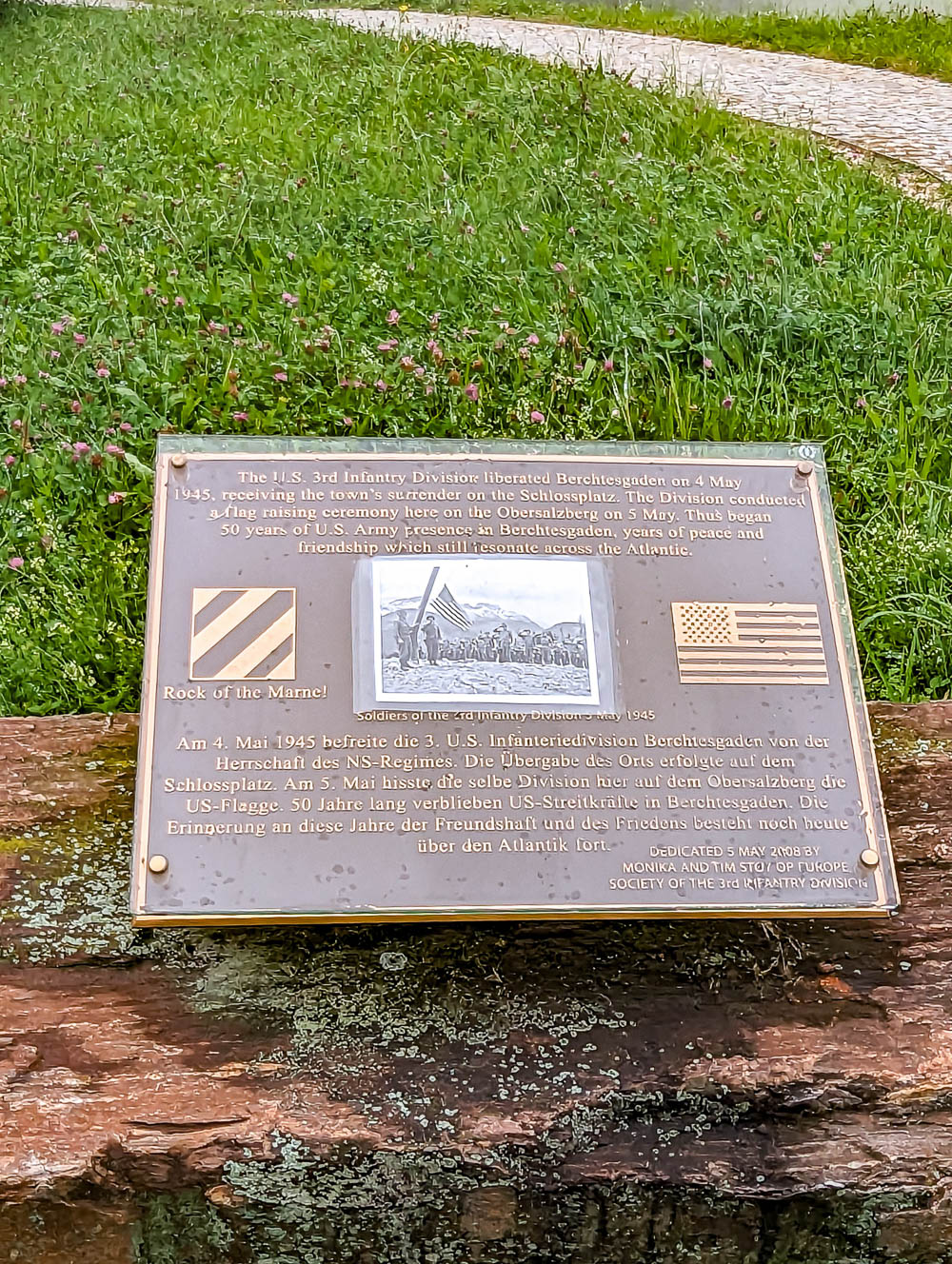
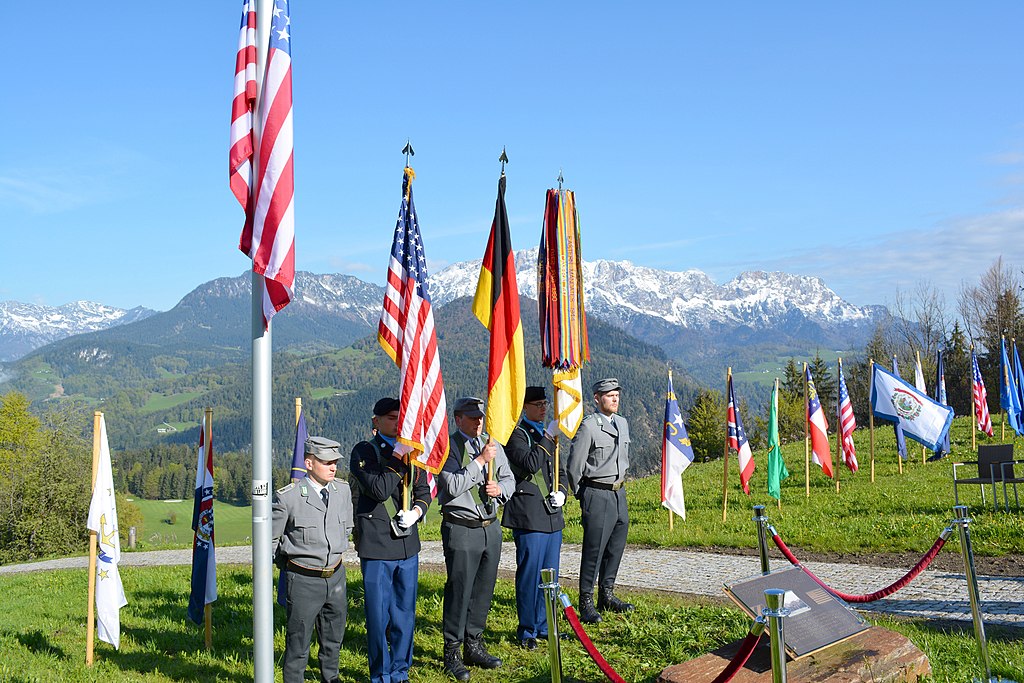
More info for your Eagle’s Nest hike
- Hotels: Find great places to stay here on Booking.com (my favorite). Hotels.com and Expedia often have good deals too. VRBO is best for rental properties.
- My personal recommendation: I stayed at the Hotel AlpinaRos and absolutely loved it!
- Rental cars: Check out the best rental car deals here.
- For more local tours, check out all the options from Viator and Get Your Guide.
- Don’t forget a Germany guidebook and this must-have Germany customs and culture guide!
- Want more? See all my Germany posts here.
Like this post? Have more questions about visiting the Eagle’s Nest? Let me know in the comments below. Have a great time in Berchtesgaden!

Save this info, pin this image:


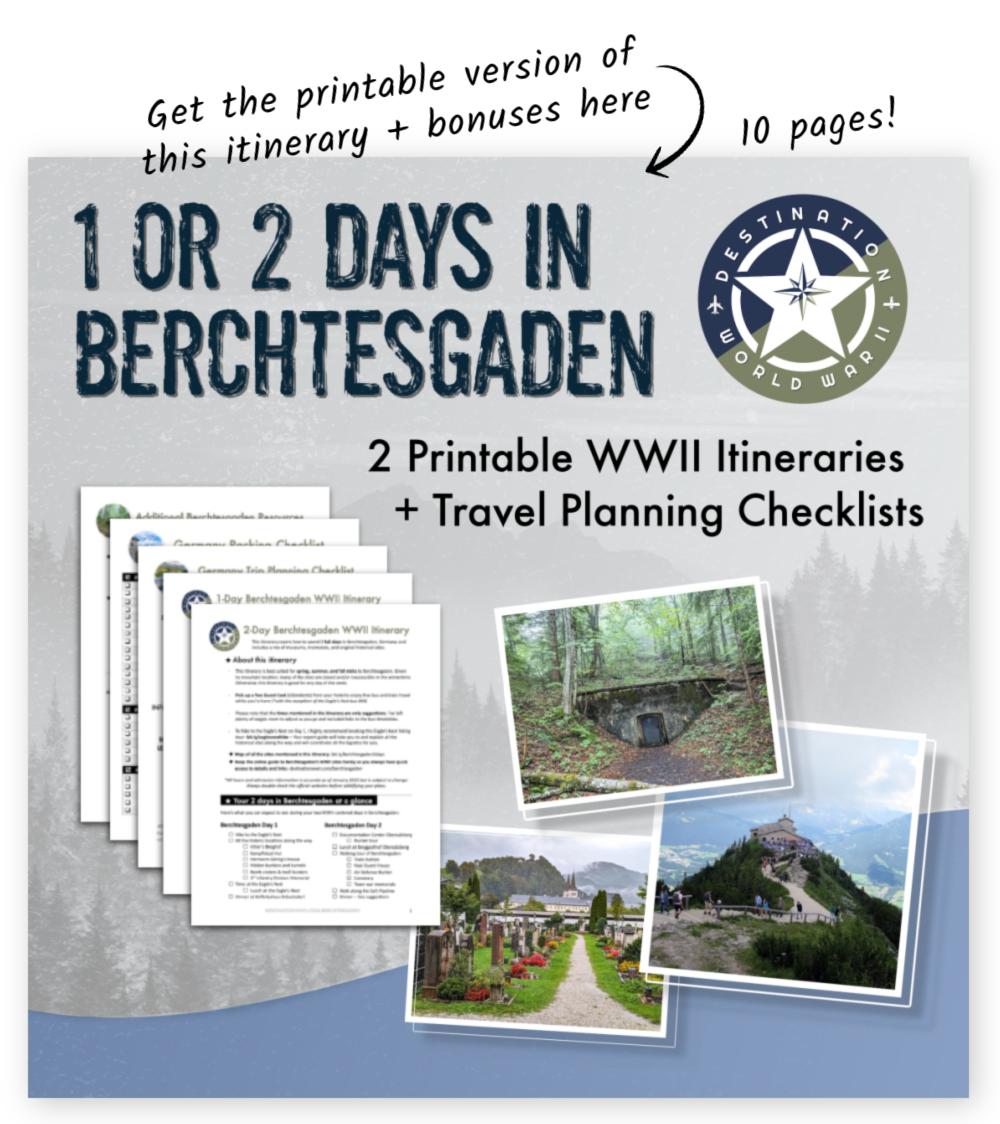
Ashley,
One of the kindest, simplest, more heartfelt and best articles about the Eagle’s Nest, Berghof and Tea House that I have found on the mainstream flow about this beautiful place, region and town…
I feel a lot of what you felt each I come here, so to say each year… Wieder im Land !
Best regards.
Thank you John! I’m happy you enjoyed it. 🙂
Wonderful article – thank you for sharing, Ashley! I’ll be going mid-2026. This helps a lot with my planning.
Great to hear, Jonell!
This article was amazing! As fellow serious histroy buff and what stuck with me was your picture of the fire place and saying those were burn marks from Hitler’s fires. That’s when I knew we were kindred spirits lol! I think the same kinds of things! Like this fireplace has seen some of the world’s most dastardly figures stand before it and now here I stand!! Incredible. Will be putting this on my list.
Haha thank you Lauren! Glad to meet others that share my often strange mindsets LOL
is the Eagles Nest open daily?
Will be taking a day trip from Munich late September
Hi Brad, yes the Kehlsteinhaus is open daily from 8:30am to 4:50pm from May until the end of October (weather permitting).
Boa noite! Muito obrigado pelas informações que você trouxe em suas páginas. Estamos indo com o quarto grupo de estudiosos da II Guerra Mundial para a Europa e tenho apenas uma dúvida com relação à Berchtesgaden. Onde ficam exatamente as ruínas da casa de Hermann Goering? Tentei localizar mas ainda não achei. Muito obrigado!
Olá, Eleazar! Não consegui encontrar a localização exata no mapa para mostrar a você. Encontrei-os porque estava caminhando até o Ninho da Águia e tinha um guia especializado me guiando. Eles estavam escondidos na mata em frente ao Hotel Kempinkski, em algum lugar entre lá e o Hotel Zum Turken. Tudo o que resta é um conjunto de degraus de pedra. Boa sorte!
Thank you for such a well written article. I came here for the name of the mountain, you included it, again thank you.
We visited Eagle’s Nest July 15, 2025, but didn’t visit Obersalzburg due to time. We know going that there was a restaurant there now
Maybe that shaped our expectations. Weather was rainy but sporadic, the view was amazing.
I’m glad you had a great visit, Sonja!
Thank you for this post! My son is currently in Germany (actually just got to Austria) and he stopped at the Eagle’s Nest today. He’s a slacker at taking photos so until his teacher posts I go and google the places and read posts like this. His whole trip has been ww2 focused and I think we often forget just how important some of these places are for knowing the whole story and history behind these events we read about. Thanks again!
What an exciting trip for your son! I bet he’s having a great time.
Ashley, Great review. Sorry to hear so many complain about this area. As a high school & college AF brat I attended a 3 week outward bound program July ’72 around the corner of the hillside from the Eagle’s Nest [EN]. One of our hikes from our camp site took us to a rocky mountain top where I belayed with my team and married instructors. It was a terrifying albeit exhilarating experience as was the whole 3 weeks in the Alps. After belaying we walked down the rocky steps in your picture to an outdoor area where the dining (with umbrellas) was at the time. I was stunned when I realized where I was. It was a Sunday and the lunching natives saw about 20 grimy & tired American HS brats walking with their back packs and filling canteens at the outdoor water spickets at the EN on our way back to camp. It was one of many visits to the EN during Dad’s Wiesbaden/Ramstein assignment [’71-’76]; then again in ’98 with hubby. Did you make it to the Nazi troops hotel [bowling alley in the basement with roads that could accommodate full size trucks?) and the glass building where Speer met with Hitler to review Berlin’s re-design (hotel was for military officers on vacation to ski/golf; glass building where I received my diploma for my ‘learn to ski week’). They were close to the Berghof. Your article brought back memories of Berchtesgaden; I rarely took pictures so appreciate yours. I’m impressed you stated how important it is for us to now enjoy this area and also to thank Germany for preserving it’s difficult history. Dachau nor EN didn’t have much info for tourist when I was there. Your article show lots of changes. I’m a WWII history buff too but I so enjoyed the alpine air, the views [i.e. Alte Hex, etc.], Lake Konigssee, the salt mines & King Ludwig’s many castles, etc. Highly recommend exploring Bavaria and surrounding area. P.S. Thank you Carol Worthington-Levy for sharing your father’s story & other fab posts.
Thank you for the compliments and for your fantastic story! I agree that this is such a nice area (and so much history to explore too).
Hey Ashley! Great write up! I am a fellow Tennessean and visited EN as a Marine in 2002. Taking my wife there in SEP. My question is should we ride bus-did this on first visit or the tram? And where do you board tram? I would be up for the mountain hike but not Laura🙃. Thanks! Bill
P/s I had great weather on first visit-vista was awesome.
Hi Bill! Well to make it easy, you only have one option. The bus to the top is the ONLY way to get there besides the hike. You catch the bus at the stop near the Dokumentation Center Obersalzberg.
I loved your article regarding Eagle”s Nest and Bertchtesgaden! I totally agree with you on some of the entitled? Unappreciative tourists that cannot comprehend the sacrifice and historical significance of this place. Anyway, My husband and I are WWII history buffs are looking forward to visiting Germany and the surrounding area in the next couple of years. This will be at the top of our list. I’m even attempting to learn German (using Babbel). Wish me luck. Thank you for the information.
Thank you Joni! I wish you nothing but the best weather for your visit. 🙂
Loved your detailed description of the Eagles Nest! My wife and I visited.
We purchased a beautiful book with colorful pictures and a history of the site. One main feature of the book talked about all of the masons and the workers who toiled through the winter to built this place. I missed this part of the story in your description of the Eagles nest. Maybe I missed it, but it was very important part of the history here. I believe the workers were told that they had to finish this for April and therefore the difficult part was the fact that it was winter.
Thanks Richard!
Ashley, that’s one of the most interesting, rational, lucid and useful reviews I think I’ve read on any tourist/historical destination. Thank you for your insight. I’ve been to Germany before but never to that area. When my wife and I go next we’ll be sure to add this to our historic site itinerary. Our own feline ‘commanders’ will have to wait at home 🙂
Thank you so much, John! That really means a lot. It’s a beautiful area; I hope you can make it. Hi to your commanders too 🙂
My husband and I will be on a Danube River cruise in May and have plans to be in Munich for 2 nights pre-cruise. We are both very interested in visiting the Eagle’s Nest on 5/17/25 (day tour) but both Viator and the other tour you mentioned are totally booked already. Do you have other suggestions? P.S. I believe that I have a chunk of Hitler’s fireplace compliments of my dad who was there during the war. So you see, it’s important that I figure this out.
Hi Maureen! First of all – WOW that you have that! That’s incredible. Definitely bring it with you to compare. Second, there are two things here. The first is that when the Eagle’s Nest opens for the year all depends on the weather. It typically opens around “mid-May” every year but the exact opening date isn’t set, since there may still be snow on the mountain. So, there may be a chance that more tours open up later when they’ve decided on an exact opening date. The other thing is that, with 2 days in Munich beforehand, you can always just make this trip on your own. You can get from Munich to Berchtesgaden by train, and then take the bus up to the Eagle’s Nest (provided it’s open on the 17th). Or you can simply rent a car in Munich and drive there yourself. It’s quite easy! See this post on my other site for more detailed instructions on getting there and visiting the Eagle’s Nest on your own: https://www.mywanderlustylife.com/2-days-in-berchtesgaden-things-to-do-itineraries/
A quick add to my previous comment.
I worked at Pearl Harbor at the USS Arizona Memorial for a long time in the early 2000’s and really fell in love with the history of the Pacific theater of WWII. Now, living in Germany has afforded me the opportunity to research and learn about (and fall in love) with the European theater of WWII. As a warm weather and beachy girlie, I never imagined my life here, surrounded by incredible history and beautiful landscape.
Thanks for giving great insight to this portion of history!
That’s so great about your new chapter! There’s so much history in Germany.
Thank you so much for this piece on the Eagle’s Nest. It has just solidified that I absolutely need to visit. Viewing it through a historical lens rather than one of immediate gratification, reminds me that if I just slow down for a moment, there is more history around me than I ever could have imagined.
I have the privilege of creating culturally and historically relevant trips and excursions for our military while they are here in Germany and following your Destination: WWII writings have been so helpful with creating this program. I have gotten so many incredible ideas and gained so much insight and I appreciate what you do!
From one history lover to another, thank you!
Hi Nichole – Thanks for your comment. I totally agree, history is everywhere if only we can keep our minds open to see it!
in the old cemetery at Berchesgarden, where the plaques of fallen soldiers hang on the walls. You will see that some were removed. These were photos of soldiers with either a swastika or the lightning SS symbol. Germany had to be denazified. So I believe many people buried during the war had their tombstones with swastikas removed and replaced by the state with normal monuments.
As you enter the cemetary you will see the bid headstone of Dietrich Eckhardt who died in 1923 and was a buddy of Hitler. Dietrich was on the run from police and went to Berchesgaden to hide, Hitler visited him there and discovered the area.. In Germany you rent a grave and this grave is paid for each year to the chagrin of the local people.
HI Ashley,
I have read numerous, if NOT too many articles, reviews, write-ups, vlogs on Hitler’s Eagles Nest, yours is the most well-balanced, written informative post ever !….I totally agree w/ everything U said !!..like some people in the comments…Kudos to U !….Just been back from the Eastern Mediterranean when I read your post!…
It was our (w/ my Friend Leo) first trip to Europe in mid-July 1983…We went through Rome and then to Vienna,. With our trip to Salzburg, we took the Half-Day Trip to the Eagles Nest, “not expecting much” except learning maybe more about our WWII History! ….That Half-Day Trip, “totally took our breath away!”…and became the apex/ pinnacle of our 2 weeks stay in Austria!…(instead of Vienna n Salzburg!).
Hope to be back in Eastern Europe soon!…..Thanks for sharing the Eagles Nest snippets that bring me back vivid memories, “doing snow angels in mid-July on the meadow walk to Eagles Nest!”…Most awesome / spectacular views ever!
Thank you so much, Ver! What a compliment! And such great stories you have too.
Hello Ashley,
Great post on the Eagle’s Nest. Sorry you didn’t get to see the great views atop the mountain. Was there this June of 2024, and enjoyed lovely weather, which of course meant a challenge to get the photos around the vast crowd. As this was my third visit and first time with good weather, perhaps your luck will be better the next time you visit.
Enjoyed the US Army signal corp photo of the troops in front of Berchtesgaden war memorial. Have been in that exact spot, and the spot another famous photo of the train station with the swastika on its side forming a backdrop as troops go marching past. Love those then and now type photos one can get with a little research.
If you are ever again in Berchtesgaden, the old cemetery shows the cost of war in another way. One wall is lined with the photos of German soldiers from two world wars lost and never recovered for a home burial. Only their photos taken with a youthful pose or smile remain as a reminder; and one can find several brothers or father-son combinations lost in the war on the memorial wall as well. The Kehlsteinhaus is a reminder of the power of ideology dealing death and warping of minds, and creating the chance unpredictability of history.
Thank you for your thoughts, Mark! I have been to the old cemetery and will have an article all about WWII sites in Berchtesgaden coming soon. 🙂
I lived in what was West Germany back in 1980-81. I never got to see a concentration camp,or visit any WWII sites because I was a diet poor spec 4 American serviceman’s wife. Oh to have the chance to ho back one more time to visit Berlin(I wasn’t venturing into East Germany as a GIs wife) and to see other more notable sites. I’d also like to revisit the town I lived in Gersfeld/When.
You article rocked btw and unlike most tourists,I’d have been fascinated by a visit to the Eagles Nest!
I was stationed in Berlin 1975 with the 287th Military Police. I was at the Berlin Wall. Then Grafenwoher and Bayreuth. I traveled in and around Munich many times, but never went to the Eagles Nest. I will be there in a couple weeks 😊
That’s fantastic, Richard! I hope you have a great time (and clear weather).
Thank you so much for this virtual tour. I really enjoyed your perspective and all the interesting facts you’ve provided. I ♡ed it!
Ashley, just want to say, outstanding review of Bertchesgaden, and the Eagles Nest! I agree with everything you said, including do your research, appreciate the history, and being straightforward with your comments about the negative reviewers. That was entertaining! LOL. We are visiting September 29, 2014 after spending two days in Munich Oktoberfest, which you helped us prepare for! 😁. Thanks for all the insight and help!
Thank you Bernie! I’m so glad I could help plan your trip (all parts of it!). I hope you enjoy the Eagle’s Nest as much as I did!
This is a very well-written and informative post. We are staying for a few nights at the same hotel you stayed in and will be visiting Kehlsteinhaus at some point. Thanks for sharing this info.
Thank you, Kathy! I hope you enjoy your stay and your time in Berchtesgaden!
We visited the Kelsteinhaus or Eagle’s Nest last week on August 6th, it was on my bucketlist for a very long time and i just cant understand how people dont get the history is part of the experience.
The feeling i got when stepping on the terrace, just mindblowing, clouds obscured the views, but eventualy it cleared up and i got some nice views, the elevator ride up, the sunterrace with the arches, wow.
Ill never forget it
Hi Erik, I’m so glad you enjoyed your visit. (And I’m glad the clouds opened up for you!)
Hi Ashley,
I was there this time last week. Very good weather, exceptional views & damn fine lemonade. In my capacity as the author of ‘I Am The Dark Tourist’ I very much enjoyed Berchtesgaden and all it had to offer – the tourists it draws as much as the difficult history it presents & how that has been addressed – I was interested to read your observations, albeit after my visit, & thank you for presenting your thoughts in such an entertaining fashion. Hopefully mine will eventually see the light of day in 5-6 years … Much appreciated. Best, H
Thank you for your observations, H! I’m glad you enjoyed your visit there as much as I did.
Ashley
I came across your article and thoroughly enjoyed it. I plan to go there in end of May 24 and after reading this I wish I had an extra day for this area. Anyways, we have about 4 hours and plan to enjoy every moment of this very important part of history. I like to read about the places I am visiting before I go and this article just gave me the details I needed and the reasons I should visit.
Thank you, Peter! I hope you have an amazing time there.
Hi Ashley! Great overview of Eagle’s Nest. I’m Chris, an American educator living in China and world traveler myself – just hit 51 countries on this recent trip to Eastern Europe. Anywho…I am heading to Salzburg now in February for our Chinese New Year break. I understand the mountain retreat is closed in winter, so can you suggest other local destinations? I assume the town of Berchtesgaden itself has a lot to see and do (cemeteries, museums, etc.) Also, even though the nest is closed in the winter, can I still take a bus to the top in February? Is the elevator open or would I have to hike it? Any advice you can give would be awesome! Thanks again for your informative review.
Thank you, Chris! Yes, the Eagle’s Nest is closed in the winter but that’s really because the mountain road to get there is closed. So, no, you can’t still go up there in the winter because the buses don’t run and I’m not sure how safe it would be to hike. (They had to closed down early last year because of an avalanche situation.) However, the Documentation Center museum is open year-round, so (weather depending) you should still be able to take the city buses up at least that far.
For everything else you can do in Berchtesgaden in the winter time, check out this post for a list of WWII-related things to see, or this post for all the best non-WWII stuff.
While my trip to Berchtesgaden and the Eagles Nest was back around 1972, I have to agree it is fascinating. The place has been more cleaned up since then. But as you are someone who finds WW2 history fascinating, I have a great story for you that my Dad told me from his days being stationed there at the end of WWII. BTW you are right, that place felt like a haven compared with what those soldiers had lived through for years before this final “win”.
My Dad was in the 131st Anti-Aircraft Battalion, 90mm Gun Brigade, as a cannoneer.
I’ll share the story here — and note, the part about Berchtesgaden i think you’ll really enjoy is the last section… Dad’s name was Alan B Worthington, and he was a PFC during the war.
As a young man, PFC Worthington saw heavy action in WWII as a Cannoneer in France, Belgium, Luxembourg, Holland and Germany with the 131st Anti-Aircraft Artillery 90 mm. Gun Brigade, after landing on Utah Beach on August 23, 1944.
With the 1st Army, they spearheaded the drive through eastern France and into Belgium, helping to free Paris in August of 1944. He often spoke about the excitement of riding with tanks and big guns down the streets of Paris with the city in jubilant celebration.
He served in the Battle of the Bulge from December 16, 1944 until January 25, 1945. Alan and his fellow soldiers went for weeks in freezing slush and ice without removing their boots; when the boots were finally removed most had trenchfoot and frostbite and many, including PFC Worthington, suffered severe and permanent nerve and vascular damage that lasted a lifetime.
In June of 1945 Alan and his fellow soldiers were assigned to Berchtesgaden, where they were assigned guard duty at Hitler’s famous Eagle’s Nest. During that period, General Eisenhower visited and PFC Worthington was assigned to greet him at the base of the mountain, where the elevator to the Eagle’s Nest was located.
A sign at the elevator posted by the commanding officer indicated “Officers Only”. After showing Gen. Eisenhower to the elevator, he told the General he would meet him at the top, intending to walk up the mountain road, as enlisted men were not permitted to utilize the elevator. Eisenhower tore the sign off the elevator with an expletive, threw it off the side of the mountain and then he walked with Alan up the hill to the Eagle’s Nest.
PFC Worthington was later ordered by his commanding officer to climb down the mountain and retrieve the sign after General Eisenhower departed.
Thank you so much for that interesting story, Carol!
Remarkable!!! These are the kinds of stories you want to read, accounts or chronicles that are rarely published but movie writers would love to copy or pirate. Thanks